#I know that this is a specific scene from Mario galaxy
Explore tagged Tumblr posts
Text

Super Mario Birth
#Nintendo music#that’s a thing that exists now huh?#I know that this is a specific scene from Mario galaxy#but…#Mario birth#Mario#mario galaxy
19 notes
·
View notes
Text
Metroid; Other M - An Essay/Review
I consider myself a Metroid fan, even though I've only played two Metroid games. Those games being Metroid; Samus Returns and Metroid; Other M, today we'll be talking about the latter.
It is recommended you listen to the track from the game called Metroid; Other M - Piano Medley while reading this. I will also give you other tracks to listen to, it is also recommended to read on desktop or a laptop.
youtube

Story
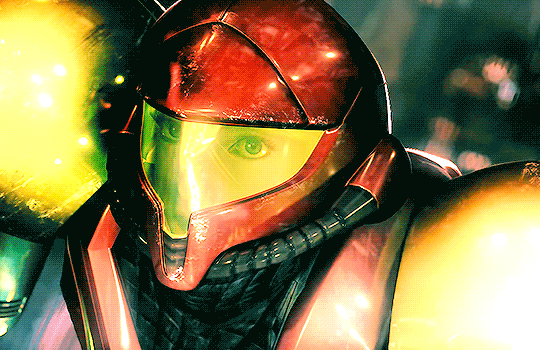
Now I as a wee child in 2012 got a Wii along with Epic Mickey (warrants it's own essay), Super Mario Galaxy (also requires an essay), and Metroid Other M (I'll refer to it as Other M). So I will be writing this without bias or nostalgia.
Now this came out after Metroid Prime 3 (currently playing it atm) which portrayed Samus as a badass, which she is in every game. This game kinda does that decently, although the story is iffy it has a good message and TRIED to give Samus emotion and inner-thoughts.
Samus after recovering from the battle against Mother Brain, that happened years ago, heads into space when she gets a distress call from an abandoned Galactic Federation base called 'The Bottle Ship' where she supposedly got the call from 'the baby'. There she encounters her old team from the time she was at the federation, these people are: Adam Malkovich, Anthony Higgs, Ian Malkovich, James Pierce, K.G. Misawa, and Lyle Smithsonian.
Now I'm still salty after all these years about the whole cutscene in Sector Zero. Now if Adam knew they weren't immune to freeze rays, why did he shoot a freeze ray at Samus?? Also his sacrifice seemed somewhat forced, but I guess Sakamoto wanted to put Samus in a more vulnerable position. Another infamous scene is the cutscene before you fight Ridley where Samus is put in a vulnerable position and is saved by Anthony, I'm not gonna go further into this but you get where I'm going with this.
Now I'm not gonna go into full detail but this game was designed to have story and action at the forefront, and this has a lot of unnecessary story bits and cutscenes. Now I know Samus' voice is very robotic but this was developed in Japan first and it was probably due to Sakamoto overseeing both the Japanese dub and American dub, in Japan a more monotonous voice makes a hero more compelling.
If we were to get a switch port I'd say fix some of the unnecessary story and re-dub the whole thing.

Gameplay
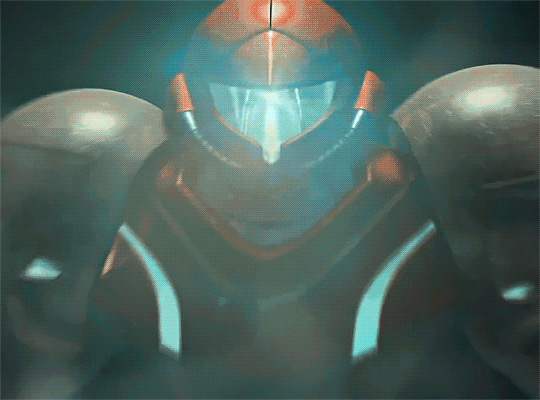
Now let's talk about gameplay which has its problems but it has its good parts. I like the implementation of authorizing weapons instead of finding them like you would in other games. You also hold the wii remote horizontally.
Now the whole finding containers like the missle capacity containers aren't that necessary unless you are doing a 100% run since you won't be using them that often. Now I have a problem with all the controls being just on the wii remote, especially with how the dodge is also on the d-pad which you use to move Samus around.
There's also the implementation of first person by flipping the wii remote vertically, this allows you to refill your missiles and recover some health since the only way to recover full health is to get to a recharge station which also act as save points. Now when replaying this for my essay/review I almost hurt my wrist when desperately trying to recharge health when fighting a mob of enemies.
Gameplay isn't great but it is decent as decent can get.

The Flaws
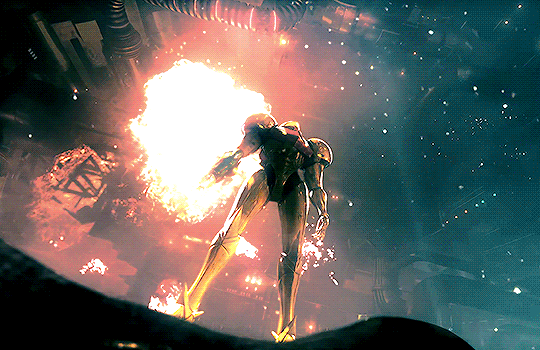
youtube
Let's talk about the flaws in Other M. Most are well known such as the poor characterization of Samus, the faulty controls, the plot holes in the story, and some of the mechanics.
I already went over the story flaws and the poor characterization of Samus, so let's go over the flaws of the game mechanics. I went over the problems that arise when playing specifically with the controls being just on the wii remote. The wii remote is also small and can easily be flung out of your hand when trying to go first person. The walking sections of the game are very boring and slow compared to the other faster paced sections of the game, the bosses are fine except for the 2nd form of Ridley A.K.A the small fuzzy creature you encounter earlier in Sector 1.
The authorization aspect is cool but Adam only activates things you need when you are actively dying. The biggest example of this is in Sector 3 when you are actively burning alive when Adam activates the Varia Suit. So it's faulty, but it is a good concept.
The missle capacity capsules aren't even necessary when just playing the game unless you're doing a 100% run through. They're especially hard to reach as well until later in the game when you'll have to back track to get them. Another problem is the back tracking you have to do, you'll travel through all the sectors only to have to back track to get back to the main area then back to a different sector. It's just so unnecessary and tiring to have to go back to the main area just to be able to go to a different sector.
Anyways we're close to the end of this essay/review.

Should You Play It?
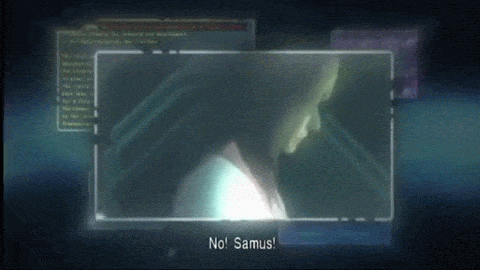
If you just want a Metroid game that's campy, you don't care about story, love fast paced action, and you can have a somewhat fun time then yes I suggest playing it.
If you care about story and 100 percenting it then this game isn't for you as you will be doing a lot of back tracking to 100% it and the story has plot holes.
This essay/review is to talk about the positives of the game as well as the negatives. It's a good game but it is shrouded by only the negative aspects of it. If you cannot access the game to play it yourself then I suggest watching a comment less playthrough of it.
This is simply my opinion and you can form your own from playing it or just watching a playthrough. But, at least give it a chance before judging it blindly. Thank you for reading, I'm always passionate about writing about the things I enjoy.
#perse's writing#my writing 0_0#metroid other m#metroid#samus aran#metroid samus#zero suit samus#essay writing#video game review
5 notes
·
View notes
Note
🤡 🎶 🛠 🧐 ❌
Ahhhh sorry for so many, I’m just very curious <3
That’s alright! I like answering them :)
🤡 What's a line, scene, or exchange you've written that made you laugh?
The ending from this old fic I’ve got where Warriors has the hiccups always gets me XD
“Oh sailor,” the captain called in a sing-song voice. Wind perked up. “Get our fearless leader here a cup of water will you?”
The sailor tilted his head curiously. “Why?”
Warriors clapped Time on the back, grinning widely as the old man put his head in his hands.
“So we can cure his hiccups.”
🎶 Do you listen to music while you write? What song have you been playing on loop lately?
Not usually, I end up spacing out and getting distracted XD as for what I’ve been listening to recently, mostly just the super Mario Galaxy soundtrack it is immaculate 👌
🛠What tools/programs/apps do you use to write?
The uh, notes app on my iPod touch. Other then that, for word count I usually use the website wordcounter.net. That’s pretty much it.
🧐 Do you spend much time researching for your stories?
Depends on the story! For Up in Arms I did a lot of research on amputees and things, and also on the scenes from Hyrule Warriors I included XD For oneshots I rarely need to, but if I’m protraying a specific injury for example I do a quick search for info on it.
❌ What's a trope you will never write?
There’s only one bed probably? That’s not really a... thing I agree with. (Unless it’s platonic you know).
7 notes
·
View notes
Text
7 Best Star Wars Video Game Ideas
Star Wars! You know it, I know it. It’s pretty great, right? Whether it’s the attacking clones or the returning Jedi there’s something for everyone in the vast Star Wars universe. But when it comes to video games the property seems largely underserved; as we pass the halfway point of EA’s ten year deal with Disney the opportunity for big, exciting AAA Star Wars experiences feels squandered, with only a few mobile titles and two tepidly received Battlefront’s to show for it.
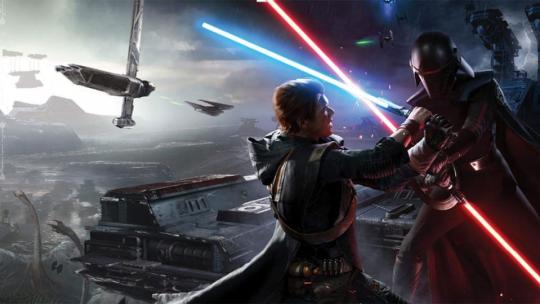
True, before the deal there were a number of excellent games from various developers like Knights Of The Old Republic and The Force Unleashed. But it would be great to see new titles with the same level of creativity with the technology and principles of the industry today. Twitch streaming equipment for beginners.
So without further ado, I present to you7 Best Star Wars Video Game Ideas!
7. Star Wars: Bounty Hunter Extraordinaire BEST STAR WARS GAME IDEAS
This is a bit of a safe one, but for good reason. Borrow the open-space jet-setting elements of No Man’s Sky, Star Citizen and Beyond Good and Evil 2 with an emphasis on tracking down and eliminating bounties like in The Witcher 3: Wild Hunt or Assassin’s Creed and you’re in for one hell of a time! The original concept for Prey 2 was similar to this, with the player running around a Blade Runner-esque future city hunting down criminal aliens.
Of course, the concept of a specifically Star Wars Bounty Hunter game has been in development for a long, LONG time, what with the cancelled Star Wars 1313 back in the LucasArts days and what is currently in development at Visceral Games. Even if it isn’t the most original idea it’s still an exciting one with a bantha tank-load of potential. Pink gaming chair under 100.
6. Rome Total Star War BEST STAR WARS GAME IDEAS
The age of Real-Time Strategy games may have past its prime, but a handful of titles carry the torch for this corner of the galaxy. The Starcraft and Halo Wars franchises have elevated the genre from the days of Age Of Empires and – what do you know – past Star Wars RTS titles. Now would be the perfect time to return to that galaxy far, far away with a platoon of clones and a squadron of starfighters at your command.
This game could easily take cues from The Lord Of The Rings: Battle For Middle Earth RTS series, with the huge roster of hero characters swimming around the Star Wars canon. If this game lets me deploy Max Rebo to stun my enemies with the dolcet sounds of his red ball jett organ, it’s got my preorder. Corner gaming desk with lights.
5. Something something womp rats BEST STAR WARS GAME IDEAS
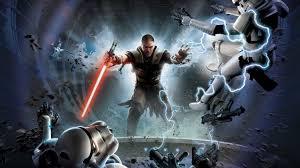
Imagine, if you will, a free roam survival game set on an iconic Star Wars planet, in which you must battle the elements and fierce creatures to provide for your community. That’s right, I’m talking about Meerkat Manor: Tatooine Edition.
Few games throw you in the body of a wild creature to do what wild creatures do. Star Wars is full of weird animals, so what better universe to pick from? I can already picture myself sneaking around profogg burrows as a lone womp rat hunting for unsuspecting prey, or migrating through a sandstorm with a family of babies clinging to my belly.
Not that it couldn’t be any other species; imagine hunting with a pack of ewoks or flying with a flock of porgs. You can’t tell me this isn’t something you’d play.
4. Knights Of The Old Republic, Again BEST STAR WARS GAME IDEAS
Okay, maybe not specifically The Old Republic era but I’d love to see another Force-focused RPG in the Star Wars galaxy. The KOTOR games are some of the best RPGs around offering you the chance to explore your inner Force user, be you a benevolent Jedi Master or a ruthless Sith Lord. This classic formula with updated visuals and mechanics would be a sight to behold, and, if done by OG KOTOR developers and RPG specialists Bioware, it could be a major upswing for the downtrodden studio.
Jedi abilities could also be expanded in a more modern way; instead of jogging down hallways traversal could easily take cues from the likes of Prototype or Infamous. Combat could also take some inspiration from the Batman: Arkham series and The Witcher 3: Wild Hunt, with combo-based saberplay mixed in with Force abilities and weapon items.
3. Galactic Podracing Championship BEST STAR WARS GAME IDEAS
Now THIS is podracing!
It might sound like a dumb idea, but imagine a deadly, high speed action racing game set on race tracks from all across the galaxy!
White knuckle chicanes through the ice caves of Hoth, glorious drifts along the beaches of Scarif, high octane dragging through the volcanic death traps of Mustafar or death-defying traffic dodging through the busy underworld of Coruscant. Throw in dynamic vehicle combat, environmental hazards and opportunities, forked paths and split-screen multiplayer and Disney would have themselves a grand prix winner.
Think of the possibilities! Be it Mario Kart arcade racing or Forza Horizon realism, this concept is nothing but supercharged, Force-injected, illegally energized podracer fuel ready to be shot straight through your visual sensors and into your brain!
Actually this game was made back in the Nintendo 64 days, but that doesn’t mean it can’t be reconceptualized for the modern gaming scene!
2. Mandalorian Warfighter BEST STAR WARS GAME IDEAS
For those of you who don’t regularly scour Wookieepedia, The Mandalorian Wars took place around 4000 years before A New Hope between the Galactic Republic and the warriors of Mandalor. The conflict had a significant impact upon the galaxy and has been directly referenced in both Star Wars Legends and official canon, so for it to feature in a new piece of Star Wars media isn’t completely out of the question.
Okay, history lesson over.
I would love to see this period tackled in the style of Ryse: Son of Rome, Brothers In Arms or Star Wars: Republic Commando, with a small squad of soldiers (either Mandalorian, Republic or Jedi) at your command. The added need to look after your men, making sure they’re fully stocked on weapons, ammunition and survival supplies, while helping them cope with the mental trauma of war (ala Darkest Dungeon) would add a much needed layer of emotional attachment. With brutal violence and decisions to make similar to those of Spec Ops: The Line I think this could be an extremely exciting title that would shed some canonical light on an era of Star Wars currently left to speculation.

1. For Honor, but Star Wars BEST STAR WARS GAME IDEAS
I think this one speaks for itself, but allow me to elaborate anyway.
The one big problem that I have with lightsaber combat in Star Wars games is that it never feels like you’re in as much control of your blade as a real Jedi. You’re either smashing an attack button to trigger pre-designed strikes and combos or prescribing a series of attacks from a list of abilities, just to watch them execute automatically. There’s so much room to elaborate on the various forms and styles of lightsaber combat with intuitive, malleable controls like those in Ubisoft’s For Honor.
Of course, I don’t just mean battle scenarios. A deep and interesting story about the Jedi and Sith with the significance of the lightsaber itself a thematic focus and some light RPG elements (character customization, a morality system and ability/lightsaber upgrades) would help tie the whole package together.
Imagine charging down a hillside battlefield as a powerful Sith Lord, lightsaber at the ready, when a Jedi Knight appears before you. As the battle rages on around you you analyse and deconstruct the enemy’s stance and form and change yours for to optimize your strategy. You hold your blade out, moving it to block the oncoming attacks waiting for the perfect time to strike. With bursts of lightning and other force abilities you bring your opponent to their knees and execute a brutal, glorious victory. In the words of Anakin Skywalker, “this is where the fun begins.”
3 notes
·
View notes
Text
I Finally Played Resident Evil 4, You Monsters
Everyone has their pile of shame, those games that everyone expects you to have played but, for whatever reason, you haven’t. Other than computer game demos from Maximum PC or the occasional game at a friend’s house, I didn’t get to play video games, so I missed a lot of games, which means that for me, that pile of shame includes so many classics, like Final Fantasy VII and Super Mario Bros. 3 because I grew up without games. Until recently, it also included a little game called Resident Evil 4.
I know gaming article’s about one’s past aren’t that interesting; we all have a past, we all have a history with games, how we got to the game and why is often less interesting than the game itself. But… this time, it’s directly relevant.
One of the earliest debates about gaming I can recall being involved in was a debate about controls. Some friends argued that bad controls were designed intentionally and made the games better, because imprecise, awkward controls made games scarier. Other friends argued that if a game’s controls were what made it scary, then the game itself wasn’t that scary at all. Resident Evil games were frequently brought up in this discussion, and because they weren’t available at all on the only gaming platform I had the ability to play for years, I had no reason to try them.
It wasn’t that I intentionally tried to avoid them--I’m of the belief that you can learn something from every game, so I’ll play anything once--it was just that there were other games that appealed to me more, so when it came time to choose a game, the other game usually won out over Resident Evil games. Because I rarely jump into the middle of a series, I gave the original Resident Evil remake a try, but even with the shinier graphics, the controls just didn’t do it for me; I didn’t connect with the game at all.
It turns out that I’m one of the people who thinks bad controls prevent a game from being good. I grew up with PC games, which had much more intuitive control schemes than many console games. Those PC games were either designed for a mouse cursor, like Age of Empires and The Oregon Trail, or used a simple WASD key and mouselook aiming system, which is the ideal way to play shooters. Intuitive control schemes come almost naturally to the PC; once Quake and Marathon shipped with WASD, that was that. Everyone started using it.
Many of my console friends grew up with things like the bizarre, three-handled N64 controller, or the Playstation Controller, which didn’t have any joysticks. Heck, some of my friends even loved the weird Fisher Price-style monstrosity that is the Gamecube controller. In fact, they swear by it. Resident Evil 4 was designed for that controller.
But more on that later.
Having grown up on PC controls, I developed a specific taste in controls, which can be summarized like this: controls should be invisible.
That’s it.
In film, there’s this idea that editing should be invisible. Walter Murch, one of the world’s greatest film editors, argued that if you were paying attention to the edits, they weren’t doing their job. With the advent of non-linear editing software, it got a lot easier to edit movies, which meant that people started putting a lot more of them in their films because they could, which means you end up with disorienting scenes like this scene in Taken 3. What should be a simple shot or two of Liam Neeson jumping a fence becomes a disorienting mess.
Controls work the same way. They exist to take thought and turn it into action. When we walk, we don’t think about it; we just do it. Fine motor skills are a part of basic human biology; think ‘grab,’ and you grab. You don’t have to think about which neurons to fire, which muscles to pull, and so on; your hand simply grabs when you want it to. Video game controls work much the same way; if you have to think about how to move more than you might as a person, the experience often becomes a jumbled, frustrating mess.
(In the case of QWOP, that’s exactly the point.)
The human brain is great at filtering out unnecessary information, and it gets better as it ages. We don’t have to think about inhaling and exhaling or manually turn our eyeballs towards the source of a surprising sound; we just do it. Sometimes, our brains are too good at filtering out information; it’s why you might start idly looking for some milk in the refrigerator while thinking about bills, stare right at it, and miss it; your brain was filtering out the milk and focusing on the more prominent task.
Most video games exist to replicate some human behavior in a virtual environment. That experience might be extremely abstract, like The Oregon Trail, where players click a button to proceed and watch a little wagon trundle across the prairie, or it might be more simulation oriented, like Red Dead Redemption, where players have to steer horses by the reigns, getting them to slow down and speed up as necessary. Whatever the case may be, a game is always taking human behavior and simplifying it, boiling it down, to make sense on a controller. The closer a game gets to real-world actions, the less players want to have to think about it.
Intuitiveness becomes more relevant as fidelity increases.
Originally, I didn’t want to write an essay about Resident Evil 4 and the controls, because I’ve talked about it in conversations and on twitter and my Resident Evil 4 streams so much. Part of me wants to talk about how great the encounter variety and pacing are--and they are good--but Resident Evil 4 has been thoroughly surpassed in its encounter and enemy variety by games like Dead Space 2 and Gears of War 3, and neither one of those games are plagued by the frustrating quick time events, bizarrely-paced cutscenes, or nonsensical story of RE4. The boss fights in Resident Evil 4 are great, sure, but Binary Domain’s are the best, and I prefer some of Resident Evil 5’s boss fights in co-op to Resident Evil 4’s.
I keep coming back to RE4’s controls. Some friends have argued that Resident Evil 4 was designed to be played with its awkward control scheme, that it’s a great game because the control scheme was designed intentionally (name a game with unintentionally designed controls, please?), that they somehow ratchet up the tension because moving isn’t easy. The theory goes that all the tension of the game would be destroyed if the game were to have a more conventional control scheme.
I generally like to leave people to their opinions, but this time, I’m just gonna say it: these people are wrong. They are wrong in the strictest, most absolute sense of the word. They’re making excuses because they love the game and don’t want to admit that it could be even better than it is. But it could be. Oh boy, it could be. And I’m going to prove it.
Once upon a time, a company called Nintendo made video game consoles. Nintendo is great in a lot of ways, but they do one thing that I think is A Major Problem: they try to make every console ‘new’ in some way, usually in regards to control schemes.
I don’t think this makes for better games.
Nintendo’s whole deal is like, hey, they won’t make something unless they can do it in a new way; I think people who won’t do something unless they can do it Extremely Well make more interesting process. Nintendo is more about innovation for innovation’s sake. It’s one of the reasons we don’t have a new F-Zero; developers at Nintendo have said that they won’t make a new one unless they can revolutionize it. That approach is why the latest Starfox games have been terrible and we got Metroid: Other M.
Nintendo seems to think this is why they succeed, so, with every generation, they work on a new control interface and try to get people into their games, but, in all honesty, I don’t think this is why their games work. Take Super Mario Galaxy, for instance. There is nothing about that game that couldn’t be done with a traditional controller. You can play it on a gamepad in the Dolphin emulator if you want right now. Super Mario Galaxy is great because an extremely experienced team of developers made the game they’re the best at making; it’s not great because of the Wii’s controller.
Innovation for innovation’s sake is how you get pickle and telephone-flavored ice cream; it’s not great. It’s also how you wind up with things like the N64 controller, which also isn’t great.
“Okay, Doc, so what’s wrong with quirky controllers? Haven’t you seen the cool unique control games that show up at GDC every year?”
Well, the big thing is that quirky controllers tie games to hardware, and the problem with hardware is that it’s much more difficult to replicate than software. Once the hardware stops being manufactured, you lose the software. People can fix ancient games and make them work again on the PC, but a lot of stuff, like old light gun games, rely on technology that simply doesn’t exist anymore. It’s much harder to preserve those games.
At some point in the future, it’s going to be extremely hard to play old Nintendo DS games, because carts are failing and the dual-screen console only has X number of viable units made, and those units are going to decay over time. Emulators aren’t an ideal way to play DS games. Eventually, it’s going to be impossible to get a working DS and play a DS game, and so many wonderful games will be lost to time.
When you lock a game to hardware that isn’t standardized in some way, like your average 16-18 button controller, you run the risk of putting an expiration date on your game, which brings me to the GameCube.
Now, look, some people really like the GameCube controller. They do. I think they’re nuts, because most of the buttons are really mushy, especially the bumper, and that right stick is awful. The build quality on these things is terrible too; it took me forever to find a good, working GameCube controller because I kept finding busted ones.
The GameCube controller was great for the year of our lord 2002, when nobody but Bungie and Free Radical knew how to design 3D game control schemes for a controller (borrowing from the PC’s ‘left stick to move, right stick to aim’ with a hefty dose of auto-aim, natch!). If you go back and play a lot of old games, many of them, especially ones with free aim, don’t hold up. That’s why so many old console games had some form of z-targeting--nobody knew how to make it work, so they relied on a less interesting form of gameplay until people figured out how to make aiming work.
The standard control scheme sucks on a GameCube controller.
Like, it is the worst thing, mostly because that right stick isn’t great and the buttons are mushy as heck… which brings me to Resident Evil 4. Look, RE4’s fans are right when they say that the game was designed with its controls in mind, but they forget that those controls were designed with the GameCube controller in mind.
Resident Evil 4 was released on the GameCube in January 2005, came out on the PS2 in October 2005, was re-released on Windows in the spring of 2007, hit the Wii a few months later, hit Zeebo in like 2008, and finally hit ‘standard’ HD consoles in 2011. Resident Evil 4 is designed for the GameCube controller, or, put another way, it’s designed to take into account the limitations of the controller’s odd setup. One example of this is how the right stick goes mostly unused.
Like I said before, in a traditional game, the left stick moves you, and the right stick aims y ou. It’s one of those “this is so simple I’m surprised no one figured it out sooner” things, but I’m a PC gamer, and we’ve been doing this in games since…
A Mac game.
...wanna guess who developed the Mac game?
“Was it Bungie, the guys who developed the modern control scheme for shooters that makes Halo 1 feel so wonderfully ageless, even to this day?”
Yes.
Yes it was.
In 1994, Bungie created the first free-look game with marathon. Move with the keyboard, look with the mouse. Other games had some form of free-look, the earliest one probably being Ultima Underworld: The Stygian Abyss (by Looking Glass Studios, the most important developers of all time, back in 1992).
Anyways, this idea of keeping all movement on one input and all aiming on another input is something we take for granted now, but 11 years after Bungie figured it out, and 4 years after Bungie made it work on a console, Capcom wasn’t able to take advantage of it because the GameCube Controller is kind of Super Garbage.
In a modern game designed for an Xbox 360 or other standard layout controller, like Dead Space 2 or Gears of War 3, player movement is responsive; both games pretend to have bulky, slow characters through their animations, sounds, and particle systems (just try slamming Marcus into cover and watch how dust puffs off the wall in response), but the games both respond really quickly to player input. Think it and it happens.
More importantly, you can strafe.
This was a source of some confusion for my friends, so I want to be clear: strafing in video games is just sidestepping. In first person games, if you press the A or D keys, you step to the side. In third person games, some people take “strafing” to mean “sidestepping while aiming,” but in a first person game, you’re always aiming, so I don’t think that’s a requirement.
In Gears of War 3, if you push left on the stick, your character moves left. If you push right on the stick, he moves right. The camera itself stays looking the direction you were looking, and if you pull the left trigger to aim your gun, your aim will snap in that same direction. You aim with the right stick and you move with the left stick, handily dividing inputs in a way that makes perfect, intuitive sense for all players.
Modern third-person AAA shooters almost universally work this way, and it’s great, because it lets you focus on playing the game instead of managing the camera. This control scheme isn’t 1:1 human-perfect simulation, but it’s doing its best to feel like human movement even when it isn’t. We can turn much more quickly than a controller stick can turn our cameras, for instance.
But then there’s Resident Evil 4.
In Resident Evil 4, when you push the stick to the left, Leon doesn’t go anywhere, he just spins. The right stick moves the camera, but it snaps back to wherever Leon was facing. If you hold the right stick and then pull the trigger, Leon will snap aim in that direction, but you have to hold it down. And, again, no matter what, Leon won’t move from his spot unless you press forward or backward on the stick.
So, imagine that there is an enemy behind a pillar in front of you. He doesn’t know you’re there, so he hasn’t moved. In Gears of War 3, you simply hold left on the stick, move over a few inches, pull the left trigger to aim, and fire, getting a nice, juicy headshot.
In Resident Evil 4, you push the camera to the left, Leon turns to the left, making you lose sight of your target. Then you push the camera forward, then you turn Leon back, and you hope you moved far enough to be able to hit the guy. If you didn’t, you’re going to have to keep turning to the left, walking forward, and turning back to hit the guy. It’s a tedious process of micromanagement that never feels good to play.
Jerking the camera around decreases readability. Readability is everything in a video game. In 99% of all cases, a game can only get better the more readable it is. If you’re constantly needing to orient and reorient yourself for simple, small movements, you’re destroying readability, which means the game is suffering as a result. Clarity is always better. I’m sure someone will tell me about some little indie game that glitches words all over the screen in an unreadable mess or whatever, and that’s great if you’re trying to, say, show that a character has dyslexia or something, but you don’t want your entire game to be like that.
It’s interesting to me that a lot of RE4’s fans have developed a kind of Stockholm syndrome, arguing that Re4 makes positioning important because it prevents you from moving while aiming, but it’s abundantly clear that this isn’t why RE4 is designed this way. The fact is, if you could move while aiming while playing RE4, the camera would constantly be looking in directions you don’t want to look when you’re trying to fight, since the camera is tied to the left stick.
You stop moving to aim not because the game is better for doing so, but because the game would be literally unplayable--not in the meme joke sense, but in the strictest, most literal sense possible--if you didn’t. The decision to stop the player in order to keep the game’s readability cascades from the decision to put the camera on the stick, and I think the camera’s on the left stick because the right stick is the worst stick that has ever existed on any controller in the history of the world.
(...er, that I’ve tried. I’ve tried a lot of controllers and I’ve never used a worse stick than that one, which is why I don’t think many people use it in GameCube games)
If Resident Evil 4 had been developed first for, say, the Xbox One, where I’ve been playing Resident Evil 4 lately, I think that not only would the game play a lot better, but Capcom wouldn’t have locked players in place to aim.
It’s worth noting that Mikami didn’t stick with RE4’s controls; on The Evil Within, his next horror game, he used that traditional left-to-move, right-to-aim control scheme we’re all familiar with. If Resident Evil 4’s control scheme was so great, why would Mikami have shifted away from it?
(Some folks may argue that TEW is not as good, but this is entirely down to the game’s encounter design and pacing, which is a separate discussion from its control scheme)
Now, some folks will argue that locking yourself in place makes RE4 a better game. I don’t think it will, but I’m not going to argue that point. I suspect that if you let players strafe when not aiming, locked them into place when aiming, and kept the camera to the right stick only, everyone would like the game more, it would have broader appeal, and even me, a grumpy old curmudgeon, would love it too.
It doesn’t help that there’s a bug in the game where your camera can jerk really far to the left or right when you aim; this wouldn’t happen on a typical control scheme, because the bug is tied to the game’s current camera setup; in a different camera setup, it wouldn’t exist.
For proof that this works, check out Resident Evil 5, a game keeps the same kind of tension and horror as RE4, but utilizes a more modern control scheme. Or look at the upcoming Resident Evil 2 Remake, which lets you move while aiming, which lets Leon strafe like a normal person, and all that jazz, but looks way more tense than RE4.
Why might Resident Evil 2 be more tense than 4 while 5 is less tense? All four games are slow, methodical experiences, but 5 is framed as a big, wacky action co-op game. It predominantly takes place in a bright, outdoor environment with a happier sound design and goofy monsters. Resident Evil 4 takes place in a spooky castle or creepy village, largely at night.
Resident Evil 4’s controls never made it creepy; the game featured a giant robot statue that chased Leon through a corridor. Was that frightening because you had to pass quicktime events to successfully escape? No. Of course not. The fear of Leon being crushed is what made it scary.
Resident Evil 2 Remake’s controls look like they’ll be relatively invisible, but the game looks so much scarier than Resident Evil 4 because the context of the game is so much scarier. The demo for Resident Evil 2 Remake is set in the claustrophobic, impossibly dark corridors of a police station. In each situation, it’s the environment and the art that determines how scary a game is.
There are so many ways to make a game scary. Start with context: you’re trapped somewhere with something that wants to kill you. Then make it dark; humans are survival-oriented creatures who rely on knowledge to survive. Darkness limits our knowledge, and our lizard brains know to be fearful when we can’t see what’s out there watching us. If we know we’re being hunted but we don’t know where we’re being hunted from, we’re gonna start to get scared.
Once you’ve done that, give players a way to fight back; if all they can do is run, then they’ll stop worrying about how to fight it. Make sure the way to fight back comes with its own risks--guns are better than swords in a horror game. I was a lot happier playing RE4 when I realized how powerful the knife was than when I was dreading running low on ammo. Uncertainty is what makes horror work; if you know that you’re going to find the bullets you need, or that your attack won’t bring more enemies, or that you won’t miss your enemy, you won’t be scared. The more uncertainties you face, the scarier the game becomes.
Resident Evil 2 looks like it checks all these boxes. Controls never really factor into it; Resident Evil 4’s relative unreadability doesn’t make it a better game. Its greatness comes from that wonderful encounter variety. It comes from seeing a thing and going “ah, okay, I need another thing to pull this off.” Working out How To Complete An Encounter is what makes Resident Evil 4 fun. Having Mike fly in with a helicopter and destroy all the zombies is what makes Resident Evil 4 fun.
Unlocking Ashley’s giant suit of armor in Resident Evil 4 is hilarious and wonderful; this game is brilliant at things like that. Apparently, you can get certain rewards for completing encounters in specific ways, like clearing out the guard towers before Mike does. There’s a lot of cool stuff that you can unlock for playing the game or its side missions, and I really love that about Resident Evil 4.
When Capcom released Resident Evil 4 for the Wii, they put the game through a dramatic control rework so it could use the Wii’s unique motion controls. Some players consider this the definitive version of the game. As someone with chronic pain, motion controls really don’t work for me. But I do find myself wondering what would happen if Capcom reworked Resident Evil 4’s controls to be more like what RE2make’s appear to be. I suspect people would be surprised at how well it works.
Resident Evil 4’s brilliant level and encounter design makes it scary. Hearing the regenerators is scary. Running low on shotgun ammo or being flanked by guys you didn’t see because you were trying to save Ashley is scary. Turning the camera to the left and losing sight of the guy you want to shoot is not so scary.
I might write a second piece about the game, focusing on the specifics of its encounter design; I still prefer the actual pace and variety of Gears of War 3 and Dead Space 2, but there’s something unique that Resident Evil 4 does with its level structure that I haven’t quite figured out how to talk about.
Thank you to David and Dillon for making me finally get this game off my backlog. Next up, Metroid Prime.
2 notes
·
View notes
Text
HERE COMES DESIGNING
here comes the ‘interesting’ part of the process... we’re going to have to take all our ideas and try to make a ‘project’ out of it.
this is what’s good about doing different stages of research - our initial research has been very open, as to cover as many pathways as possible, and over time we get a better idea of the project we want to create. but now comes the time where we have to narrow it down further.
and to do that, we need to start the designing process.
MAPPING OUT THE ‘WORLD OF DELIGHT’:
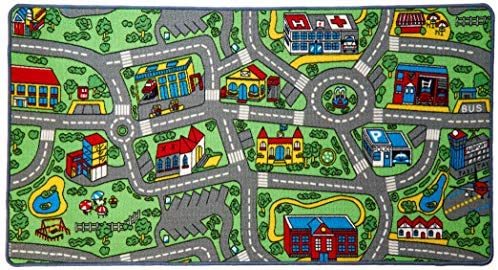
from our mismatch of ideas, we’ve accumulated that we know we want to go for a sort of outer-space scene, featuring low poly models and video game references to encapsulate a feeling of nostalgia.
that sounds pretty streamline, from here - but when designing we need to compose a multitude of ideas and select the best elements from each to create a good final outcome.
process
thinking of ‘delight’ - alludes to everything being perfect, and that somehow lead me to thinking about religion. from what i hear about religion, people have blind faith in a deity so that after a lifetime of being good people they are rewarded by being let into heaven.
“heaven is��a common religious cosmological or transcendent supernatural place where beings such as gods, angels, spirits, saints, or venerated ancestors are said to originate, be enthroned, or reside.”
in media it is usually portrayed as a beautiful city in the sky, where all your favourite things and people will be waiting for you after you die.
i like this idea: its really comforting for some people to think that there’s more waiting for them, after they die. i started imagining what i would want if this set of rules applied to me: and settled on designs such as this one:

heaven is somewhere between space and earth, so originally i settled for having multiple large platforms, with levels at different subsequent orientations, that represented different levels of my personality, and interests.
the picture above was my design for the first platform, and the set would consist of more of these building up to create a fully-furbished world.
in a similar manner to that of a theme park i included an ‘entrance’ that read the name ‘delight’. meaning this was in fact the ‘world of delight’.
however STILL unsatisfied, i went for an overhaul, and scrapped what i had - deciding, instead to follow take things quite literally using the ‘world’ part of the ‘world of delight’...
THE ‘GALAXY OF DELIGHT’
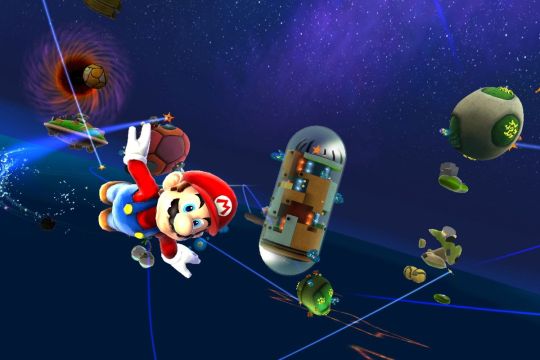
welcome to my final plan.
space consists of many planets: thats something that everyone knows, so much so that pop-culture has streamlined the process, with franchises such as Star Wars populating recurring planets with their own climates, and alien races, to populate them.
in a similar visual manner to the ‘Mario Galaxy’ series - i want to make my ‘world of delight; a galaxy that consists of planets. in the games, the planets really only exist for a specific purpose, and each is only visited about once: to provide a challenge for the player before reaching the goal.
i think that working towards a space animation would be not only visually appealing, but differ from what my course mates will produce from the same brief.
the use of visually similar models is what’s essential for this project to work: so of course - as I've said numerous times: the low-poly aesthetic is what i’ll want to work with. to further this low-poly vibe I'm striving for, I'm going to compose my soundtrack to incorporates a combination of compressed sound fonts, and a few chiptune-esque electro features. maybe even a grainy TV filter, to further play on the theme of nostalgia?
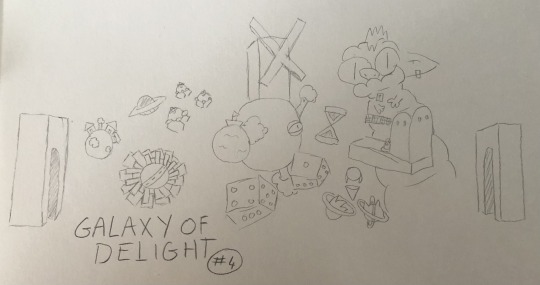
through the fruit of my labour, here is the rough design for what i want in my animation, (although the final project might have some slight changes to size and placement, to better the composition of our journey.)
I’ve incorporated multiple visually interesting elements, that take inspiration from my previous research. and I for one am looking forward to working with this plan, and seeing how i can transfer this sketch into a low-poly, 3D “Galaxy of Delight”
0 notes
Text
35 Years of NES - Flashback Special!
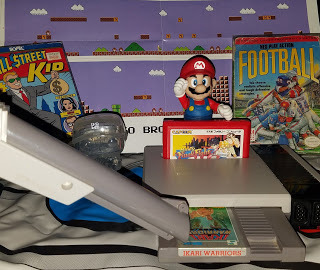
It took me 12 minutes to set up this shot of what encapsulates my NES fandom! Please sit down and listen for awhile as I recount my life and times as a NES kid! This October in a couple months will mark the 35th anniversary of the launch of the Nintendo Entertainment System (NES) in North America so that means it is time for another flashback special where I recount my personal history with the NES. This is the 11th platform that has gotten the flashback special treatment from me in the little over a year I have been doing them and if you want to get caught up with the rest make sure to check out the links at the bottom of this entry! Furthermore, if you are looking for a more traditional anniversary piece chronologically highlighting the history of the system and its top games I have you covered there too. At the bottom of this article I have embedded old podcasts of mine I recently uploaded to YouTube from my personal archives where we highlight the system as a whole on its 25th anniversary ten years ago. I additionally have podcasts from my history of RPG and comic book videogame series highlighting the NES entries from those genres that are all featured at the bottom of this article to keep that NES anniversary train rolling for the rest of the year! Being Introduced to the Power
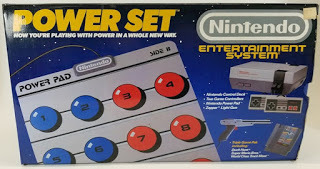
I will never forget the first impression the NES made on me because it was the first time I ever witnessed and played a videogame! It was the Christmas shopping season of 1988 and I just got home from Kindergarten class to see my older sister playing some electronic contraption that was absolutely foreign to me. My eyes soon gazed upon the TV where a crudely pixelated man in red overalls was running and jumping across the screen to the catchiest of background music jingles that will always stick with me. She soon enough passed along the NES’s vintage rectangular controller to me and within minutes I was hooked as I sunk my teeth into my first videogame, Super Mario Bros.. Our family got the ‘Power Set’ which had the 3-in-1 cart featuring Super Mario Bros./Duck Hunt/World Class Track Meet along with the Power Pad and Zapper accessories. I was too little to figure out how to operate the Power Pad at the time and rarely played World Class Track Meet, but the family did get a decent amount of playtime in Duck Hunt and groveled over how we could never shoot that damn dog! We always kept coming back to Super Mario Bros though. I had no idea what I was doing as a five-year-old at that time, but I knew I had to give it my all to get Mario to jump to the top (and over???) of the flagpole at the end of most levels. Eventually I stumbled my way accidentally jumping into hidden blocks that contained SECRETS like extra lives, bonus coin blocks and vines that lead to bonus coin rooms and warp zones! Much like today how I have to explore every nook and cranny in the latest open world sandbox game, Super Mario Bros. planted the seeds for that gaming mindset in me to jump around and explore everything to find whatever secrets Nintendo had in store for good ‘ol Mario.
youtube
The minus world was the ultimate secret in videogames for so many years that it was the #1 secret of the top 100 secrets in the 100th issue of Nintendo Power. It took me about a couple years of trying over and over and taking advantage of all the warp zones and extra live secrets I could, but the original Super Mario Bros. was the first game I ever finished. When I thought I discovered all the secrets in the original Super Mario Bros. a friend or cousin would power it on and showed me all new secrets and tips that blew me away. First it was getting to time a jump just right on a koopa troopa coming down the block stairs so Mario would repeatedly jump on them to get near-infinite lives. Then they showed me the hidden warp zones….and then there was the day after much repeated attempts that my cousin showed me the much talked about ‘minus world’ in the game that perplexed me so much that I lambasted him with questions about said level’s eye-opening odd level design. ‘Why did the level never end? Why is this magical force sucking Mario through the bricks, cousin….IS MARIO A GHOST!?!?’ That tripped me out as a Kindergartner, but not as much as the most sinister-looking baddie in the game, the dastardly Hammer Bros!!!! No I am not talking about the adorably-huggable hammer bros. from Super Mario Bros. 3, I am talking about the spiky-squiggly-shaped monsters that chucked super-sharp-metal-thingies at Mario!!! The original Hammer Bros. petrified five-year-old Dale!!! Just see for yourself below…
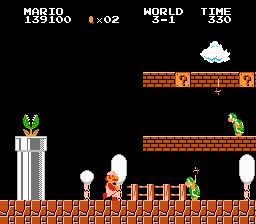
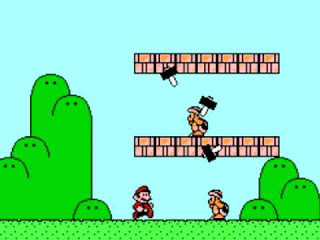
Encountering the Hammer Bros. for the first time in a night level only amplified the terror they unleashed! I was terrified of them, but what was especially terrifying was how Nintendo gave them a paint of cuteness by their look in Super Mario Bros. 3 as you can see above on their right. You can almost look walk right up and give them a hug! Bring back the sinister OG hammer bro Nintendo! As much as I loved the original Super Mario Bros., I never got to put a lot of playtime into its sequels. I think they were always rented out at the local video store. I do recall watching my cousin finishing Super Mario Bros. 2 and watching in awe the quality of the ending ‘dream’ cinematic that stirs controversies to this day! I never played much original NES Super Mario Bros. 3 either until I got Super Mario All-Stars where I later played a ton of both of those games, but that is a story for another day. The Joy of Renting and Garage Sale-ing

Speaking of renting though, it was how I played almost all my NES games for the first couple years our family had the NES. I was too young to realize games could be purchased at the store and thought games could only be rented at the video store….at least that is what I think my mom caused me to believe anyways. Looking back I loved those early NES years perusing the local video store and only going by misleading box art on what to rent. There are four specific renting memories stood out from those years around the end of the 1980s. One is playing a ton of the first CastleVania and being perplexed at why the heart pickups did not restore health, second is perishing repeatedly in the original Mega Man right from the start which got me to swore off the franchise for a few decades (more on that later). Another time I freaked out at the video store receiving my copy of Tengen’s RBI Baseball and discovering how their black cartridges differed than the standard NES gray carts, but only to have the video clerk assure me they would work on the NES. Finally, my favorite rental memory was getting gleeful goosebumps as a result of the mesmerizing beats of what is my single favorite NES theme, yes I am talking about the ‘Moon Theme’ of Duck Tales. A theme so powerful it still gives me the shivers to this day.
youtube
Behold the single best NES stage music of all time!! Now listen to it for ten hours straight!!!! I mentioned in previous flashback specials how I grew up with divorced parents. I would visit my dad on the weekends and he would usually be a system a generation behind because he was big on garage sales and people were getting rid of their old systems typically when the next system was hitting. So when the NES was the primary system, I would play Atari 2600 at my dad’s on the weekends. Around the time SNES launched in 1991 was when my dad finally got a NES, and he would have another regular NES game or two every several weeks he found at another garage sale. I recall the first four games he got with his NES: Days of Thunder, Gauntlet II, Ikari Warriors and 10-Yard Fight!
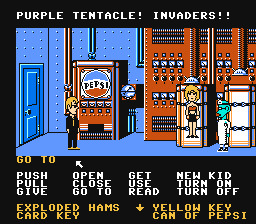
My dad bought whatever he thought was a deal at the time of those garage sales, and the quality of games he brought back varied greatly. His garage sale bargain was how I first played classic hits like the original Legend of Zelda and Maniac Mansion. I was seriously into both of those games even though I struggled to make progress in Zelda because all I had was the packed in map to guide me in the pre-Internet and strategy guide days. I made my own dungeon maps in Zelda, and loved trying to figure out the way to get past its increasingly trickier dungeons and puzzles, but eventually got stuck after the third dungeon and could not deduce the pattern in its version of the ‘Lost Woods’ for the life of me. Maniac Mansion was the first adventure game I was exposed to and was instantly hooked, even with the clunky and censored NES port I was resilient in attempting to figure my way around the lighthearted obstacles of the mansion and trying to hide from its alien residents. Reflecting back on my fandom for Maniac Mansion, it got me confident that if I was aware of the PC gaming scene of the late 80s/early 90s instead of the NES scene that I would see myself being head over heels for the countless adventure games from Sierra and Lucas Arts at the time. There were other times however my dad would come back from a garage sale with not-so-desirable titles like XEXYX, Dash Galaxy and Rocket Ranger, but sometimes his picks were a surprise. I somehow got locked into the addictive nature of the stock market game of Wall Street Kid and played far more of that than I had any right to. My dad eventually got the four player adaptor for the NES and the family tried to do the unthinkable one day and dedicate an afternoon to finishing Gauntlet II. We loved that game, but never had time to finish it in a session because the levels just kept never ending and we presumed it had to end by level 100. So one of my favorite NES memories is when the family gathered determined to finish level 100…which we did, but our bravery was for naught when we were all stunned to see that was not the end of the game. I believe we got to around level 130-ish before we eventually threw up our arms and powered off the NES. How the hell were we suppose to know back then that the levels procedurally generated!?!


Gauntlet II and Ikari Warriors were two of the four games that came with the NES my dad purchased at a garage sale and thus we invested countless hours in both, yet both titles we failed at finishing! My dad, brother and I played far too much Ikari Warriors together. I know it is a sloppily designed game with a lot of glitches and other hiccups, but the setting and atmosphere of Ikari Warriors rode the coattails of the infectious Rambo-hype of the 80s. Ikari Warriors on the NES felt like more of a faithful videogame adaptation of that film than the actual Rambo NES games itself. Ikari Warriors was the next best thing by chucking grenades and wreaking havoc with a tank, especially with a second player in co-op! That game burned through lives to the point of where I expected there to be a cheat code to get more lives because it would hang at the game over screen for a good 10 seconds so eventually I mashed buttons until I memorized that ‘A,B,B,A’ unlocked three more lives! I was super proud of being able to figure out a cheat code on my own! The levels in Ikari Warriors went on forever though, and regardless of having near-infinite lives with that code, we would eventually get bored and/or confused at that awkward fourth stage with the bizarre piping the warriors would get hung up on. Over the years the odd gameplay quirks of Ikari Warriors I look back at fondly I came to discover that everyone else detested as one of the worst NES titles, which I feel is a bit much. If my words cannot do it justice, then James Rolfe captured the highs and lows of Ikari Warriors perfectly in an episode of Angry Videogame Nerd I highly recommend giving a watch by clicking or pressing here. Playing with a Different Sort of Power
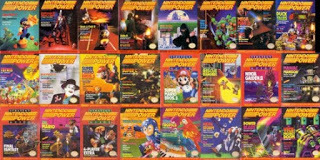
Over the years I came to find out that the mega popular Nintendo Power magazine was the go-to source for NES fandom of that era. I am an outlier in this case as I was not aware of the magazine until well into the 16-bit era. I chalk this up to never buying games brand new at the time where most new games on Nintendo platforms came bundled with Nintendo Power subscription inserts which I did not become keen to until getting new GameBoy games in 1993. So where was I to get all my latest NES coverage in the late 80s and early 90s before the Internet and then completely oblivious to the videogame magazine market? Through super cheesy, early 90s videogame-themed TV shows! There was not an official Nintendo Power show, but there was an awesome game show on weekday mornings for a couple years in the early 90s called Video Power that showcased kids playing the latest NES games in various challenges. Nickelodeon had a videogame TV show too, which was another game show called Nick Arcade. They had kids answering trivia and competing in various arcade game and virtual reality-esque challenges. The magazine GamePro also endorsed a TV show at the time and it featured more traditional game coverage and I recall it having an over-the-top host showcasing the latest secrets and tips. If you are not familiar with these shows, they are fun to look back on as they capture the goofy ‘extreme kids’ nature that dominated the early 90s. James Rolfe once again does a nice breakdown video of Nick Arcade and Video Power I will embed below or you can click or press here to check it out. These three shows and the latest gossip with classmates and friends were the only ways I got my news about the latest NES games back then.
youtube
Nick Arcade and Video Power are dissected in the above video and those TV game shows were how I was initially glued into the latest NES games as a kid. NES ‘Rights of Passage’ For those that grew up with the NES, I bet you have a good idea where this is going. Anyone that owned the traditional rectangular NES with the flip cover of doom will know that model of the NES was notorious for only powering up games about half the time. Recess-rumors lead us all to believe that blowing into the cartridges made them work better, and while it usually did I still remember my dad buying cleaning kits at the store and insisting using it to clean the games instead of blowing into them…but I like many other NES-kids were super impatient and instead went with the blowing/jiggling the NES-cartridge ever so gently into place….and sometimes wiggling the cartridge up and down several times before firmly locking the cartridge into place and powering on the system. That was the way I convinced myself to get NES games to power on their first try with a 60% success rate! For younger readers here who are doubting me, I am not kidding. This was a thing….seriously! Click or press here for proof where the GameSpot crew of 2005 detail their near identical NES-troubleshooting demonstrations in their excellent video on the NES!
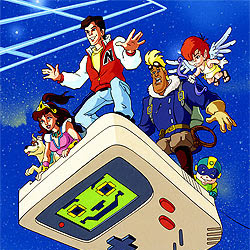
As the header above alludes to, that was one of several ‘rights of passage’ for all NES-kids of the era. The so-bad-its good animated show, Captain N the Game Master likely was part of your Saturday morning cartoon lineup (yes, I have the DVD set, be on the lookout for a review…eventually). Another one was ‘NES-thumb.’ I love Nintendo’s directional-pad, but on the NES longer play sessions with button-mashy-prone games would result in it leaving a scouring imprint on the thumb for hours! I feel safe to say a majority of NES-kids encountered an awful LJN-published game based off one of their personal favorite licensed properties of the 80s. For me it was the atrocious X-Men title, its agonizingly bad Back to the Future game and most of their WWF games. As much as I loved the Ikari Warriors code described above, the most popular code spread across several NES games was the ‘Konami’ code. Ask any then game player 35+ and they likely would be able to subconsciously spout it off to you instantaneously! John Cena turned the code into his best t-shirt design! Calling Nintendo’s long distance-fee heavy hotline for the latest tips from Nintendo’s endorsed gameplay counselors was another thing that got kids to surprise their parents with $100+ phone bills. The last big hurrah for NES-kids was going to see The Wizard at the end of 1989 to see a few precious minutes of Super Mario Bros. 3 gameplay a couple months before its release! I could go on about The Wizard forever, but that was why I covered it here on my blog last week instead so if you want to know all about the Nintendo adver-film, then click or press here for my entry on it! 8-Bit Sports Fun for Everyone! Talking to other core gamers and listening to many gaming podcasts over the years one irk-ing trend is of most ardent game players shaming sports game fans. I understand why the main EA Sports and 2K Sports games are sim-focused experiences that are not for everyone, but they continue to sell well and have their dedicated fanbase. Back in the 8-bit and most of the 16-bit generation, sports games were simpler pick-up-and-play affairs that worked for almost anyone, especially on the NES with its simpler graphics and only having two primary action buttons. The first sports game I got into on NES was Double Dribble which blew me away with its ‘cinematic’ dunks. Nintendo’s Ice Hockey was a huge favorite of mine and it featured fast, scoring heavy action, and had fights, overtime and shootouts all crammed into a NES cartridge. I thought it was the best hockey game on the NES, and then I discovered the more brutal and up close fights in Konami’s Blades of Steel! There were a deluge of baseball games on the NES and the two I got into the most were the original RBI Baseball and BaseWars. RBI Baseball had the illusion of realistic baseball, but simple enough for anyone to grasp. It had a twee-art style, happy-go-lucky background music to nod along with and was one of the first baseball games to feature real MLB players. BaseWars frigging ruled! Futuristic teams of robots duked it out on the diamond and would engage in battles when attempting a tag out!
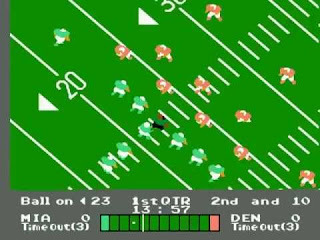
For pigskin NES classics, the first one I got into was 10-Yard Fight! It had rather….particular…controls for a launch-era NES football game, but I eventually adapted to it. I know now that Tecmo Bowl and especially its sequel, Tecmo Super Bowl were the cream of the crop of NES football games, but I never got a chance to play them until many years after the fact (and I was still blown away by my friend’s first play he picked against me which was scrambling to the back of his endzone and unleashing a 100-yard touchdown pass!). My own personal top pick is NES Play Action Football, a gridiron game that will forever have a place in my heart! I have everlasting memories of my dad teaming up with me to take on the computer. The passing controls in this game are garbage so we only did running plays, but the players ran absurdly slow…and that was even when factoring in there was a turbo speed button! My dad and I however learned to own that ridiculous control scheme! I would hand off the ball to him and then I would take control of the linemen and block defenders for him as he ever-so-gradually-inched-his-way-across-the-field. I am not embellishing by saying it took a good two whole minutes to traverse about 80 yards. It was completely asinine, but I felt a huge sense of accomplishment with every first down and touchdown my dad and I accomplished with our teamwork! That covers the four major American sports, but there was also a lot of representation from the ESPN Ocho tier of sports games. I loved me some Super Dodge Ball and loved going through its world cup mode. Its adorable oversized character graphics carried over into Nintendo’s soccer game, Nintendo World Cup. Nintendo also delivered two excellent golf titles on the system with the self-titled Golf during the black box launch era of the NES, and a more fleshed out version of that game with a career mode and three courses in NES Open Tournament Golf. Konami’s pair of International Track & Field titles were excellent arcade conversions. Finally, I would be remiss if I was not to give Mike Tyson’s Punch-Out a little love here. I ate up the puzzle pattern boxing gameplay with its distinctive roster of foes for the affable Little Mac. I wish I was not awful at it as I could only get to Bald Bull before my inferior skills met their match.

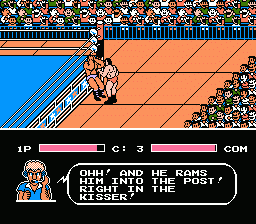
I invested countless hours into marginally satisfactory NES wrestling games. The cream of the crud pictured above is Wrestlemania Challenge and Tecmo World Wrestling. The wrestling nut in me begrudgingly admits there is not a five star grappler on the NES. All the WWF games range from middling to atrocious. WWF Wrestlemania Challenge I would say was marginally solid because it had functinal enough gameplay, a decent roster with wrestlers not seen in many other games at that time like Rick Rude & Andre the Giant, featured finishing moves and best of all one of the few wrestling games that played AWESOME chiptune renditions of the wrestler's theme music throughout gameplay! Avoid Tag Team Wrestling and M.U.S.C.L.E. at all costs, both of those abysmal wrestling games make all the LJN WWF games seem competently made. Pro Wrestling is good for a launch era game, but it is very limiting all things considered. I had a lot of fun with WCW Wrestling back then, but its unique controls have not aged well. I would have to give Tecmo World Wrestling the nod as my favorite NES wrasslin’ game because of solid controls, Tecmo’s trademark cinematics and its goofy announcer providing nonstop text play-by-play on the bottom of the screen that constantly had my attention.
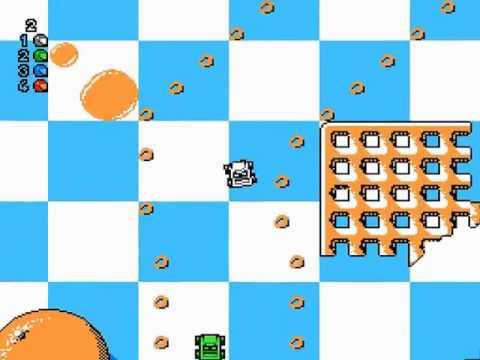

Some of my favorite driving NES games seen above are Micro Machines on the left and Super Off Road on the right. A Micro Machines game with the same style of core racing mechanics has appeared in almost every console generation since! Super Off Road is probably my favorite four player NES game. Driving and motorsports were another favorite of mine, and the NES was loaded with them! My two favorites were Super Off-Road and Super Sprint. The former because it was a pretty faithful conversion of the arcade game and had four player support my family and friends clocked many hours with. Super Sprint had a similar overhead view of the whole track, but felt like it had more realistic handling, yet still contained many increasingly tough obstacles to overcome. In a strange twist, I later found a couple years ago the developers of Super Off-Road made a F1 style of that game that is also four player compatible in Indy Heat, but it also features pit stops where you can ram over the pit crew! Excitebike was an early childhood rental favorite as I loved going over the ramps and wiping out and randomly assembling a mish-mash of parts of a course in the track editor. I was bummed the NES never got the excellent OutRun from the arcades so I had to suffice with Square’s take on the checkpoint-based driving game, Rad Racer and its sequel a couple years later which were almost, but not quite on par with Sega’s flagship arcade driving game. RC Pro-AM and Micro Machines I am a huge fan of both racing games that feature an overhead camera that locks on and follows the car from a birds-eye view unlike the average behind the car camera perspectives that dominated that era. Collecting for the NES As the 1990s wore on a local video store selling its excess stock and a local game store called Tiger Play were my go to spots for a few years for used videogames. I will never forget lucking into a $2 copy of Tengen’s Tetris at the video store. Eventually eBay opened the floodgates to track down a lot of the NES games I rambled on about above. A regional annual retro game convention, The Midwest Gaming Classic, I attended several times over the past 15 years also attributed to many of my NES games. One year I was ecstatic to get a fan translation of the original Mother game that Nintendo would later officially release on the WiiU as Earthbound Beginnings. I was also ecstatic to get a fan mod updated rosters version of Tecmo Super Bowl. I eventually got a NES-clone system towards the end of 2000s that handled NES games exponentially better than the original Nintendo system and also allowed the ability to play Japanese Famicom games. At MGC I would buy one or two random cheap Famicom games a year to make use of the Famicom slot. I only wound up with several Famicom games, with highlights being Baseball, Tetris and Mighty Final Fight.

The last trip I made out to MGC in 2018 I went in with the goal to finish off my Power Pad game collection and hunt down the last three Power Pad compatible games I did not own to officially have all eight or nine Power Pad games. After perusing the many vendors there I was able to track down the much treasured copies of Athletic World, Eggsplode/Street Cop and Dance Aerobics down, along with a bonus homebrew NES cornhole/bag toss game, Tailgate Party, that also took advantage of the Power Pad. A couple years ago YouTube creator, Pat Contri released his exhaustive Ultimate Nintendo Guide to the NES Library coffee table book/tome that reviewed every single NES game. I read it over the course of a year via a few pages a night before bed. It naturally turned me onto several games I either long forgotten about or completely went over my head and I wound up tracking them down online. That book got me wound up on a NES four player game kick and I have about a dozen four player NES games right now. One night a couple years ago I did a four player NES party night and managed to have a fair amount of fun with some friends going at it in Super Off-Road, Gauntlet II and Super Jeopardy. Right now my preferred way to play NES cartridges is via the Retron 5 system. I know that clone system is a little polarizing because of its emulation software it uses, but I love its performance at playing NES games and other cartridge based systems on my HDTV without the fuzzy graphics and lag that happens when plugging in old composite/RCA cables that came with the NES. I also love that it allows save states and the equivalent of Game Genie cheat codes. A couple years ago I finally got around to playing through SNK’s action-RPG, Crystalis and I would be lying if I said I did not take advantage of save states and a couple of the cheats. Official Nintendo NES Preservation Nintendo has been doing their part, for better and worse, at keeping the NES catalog alive digitally going back to the launch of the Wii in 2006. I picked up several NES games digitally for the Wii at $5 apiece for the Wii’s Virtual Console. I did the exact same thing a few years later for the WiiU and 3DS. The Virtual Console was a handy feature I took advantage of somewhat, but I think it far benefitted younger gamers who were being introduced to those classics for the first time. Nintendo spawned the mini-console craze a few years ago with them debuting the NES Classic, which packed 30 first and third party NES games into a pint sized version of a plug-and-play NES. It featured a solid lineup of games across all genres and was a great bargain considering strong library of games. The emulation quality was leagues better compared to the Virtual Console and the NES Classic feature better implementation of save states and now the ability to rewind gameplay. I brought the NES Classic over to family gatherings and it was a hit all night long.
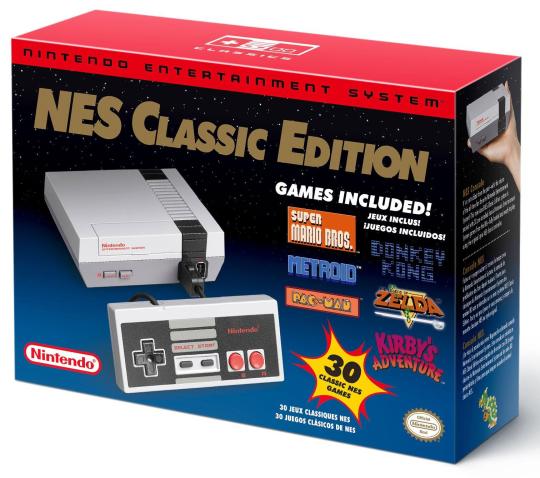

The NES Classic and NES Channel on the Switch are my two top legitimate recommended ways to digitally dive into the NES library! The best part about the NES Classic was how easy it was to mod and upload your own games to. I know the various RetroPi’s and Mister devices have been capable of this for awhile, but there is something special about the NES Classic’s interface that makes it the preferred way for me to re-experience these NES gems. For a little last minute prep for this article, I loaded up Nintendo’s latest way to experience NES games via the NES Channel on the Switch. Right now it has a little over 50 unique NES (and a small selection of Famicom) games available to play in North America. I dabbled with a few different game for a little over an hour, and finished off my session by playing through the first several stages of Super Mario Bros. again. Nintendo once again stepped up their emulation efforts here by having even better functioning save states and rewind features and now the ability to do online two player. I got my nephew to play with me online and it worked surprisingly well…..other than my fifth grade nephew initially being a little crabby at the graphics being ‘old’ at least. I do not hear many people touting this feature that much and I think it is awesome that Nintendo made this back catalog online and all things considered is part of a great value for $25 a year for Nintendo’s online Switch service.
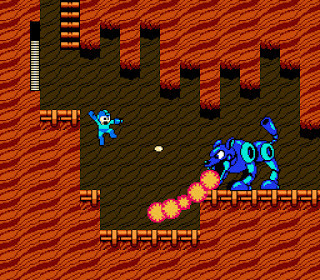
If those two options do not interest you than there are a ton of other NES games that got re-released as part of collections on many systems over the years. On the current gen alone I would recommend the first Mega Man Legacy Collection that collects the first eight Mega Man games, of which the first six are the NES games. That was how I first experienced Mega Man 2 after the aforementioned boycotting of the brand. Yes, it was after decades of reading testimonials on how Mega Man 2 is one of the all-time greats for the NES I finally played it off that collection a few years ago and loved it. It also allows save states thank goodness, or else I would never be able to conquer that final gauntlet leading up to Dr. Wily! Other recommended collections would include the digital collections Konami released last year rounding up the early entries of the CastleVania and Contra games, both of which have all their NES installments. I highly suggest getting Capcom’s Disney Afternoon Collection that has six of the best licensed NES platformers such as both Duck Tales and Rescue Rangers games. SNK released an excellent 40th anniversary collection last year too which includes several of their NES games including my beloved Ikari Warriors and its two lesser sequels. The Double Dragon and Kunio-kun: Retro Brawler Bundle gathers the Double Dragon trilogy, and a ton of Technos favorites like River City Ransom, Super Dodge Ball and nearly a dozen others that until now were exclusive in Japan. For younger readers not familiar with the NES library, these are all recommended ways to legit first experience a healthy chunk of some of the best games of the NES library! The Power Lives On…. I cannot believe it has already been nearly 35 years since the NES first launched in North America. Since it is the system of my childhood, I will always be super nostalgic about it. The NES introduced me to the world of videogames and I have been hooked ever since. My favorite game for it would have to be the original Super Mario Bros., with podium finishes going to The Legend of Zelda and yes, the dastardly Ikari Warriors. Whenever I go into a retro game shop or convention I almost instinctively find myself glomming towards the NES section in hopes of finding some long neglected title to have in my collection even though I constantly remind myself I have every game I want for it. Many thanks for making it through this beast of a read and indulging my lifetime of NES memories and I hope I have either introduced you to some new NES factoids and games here or at least had a fun trip down memory lane with me. If you want to indulge me in more NES retrospectives, but in audio form this time, I have embedded a few podcasts I recently un-vaulted from my archives below.
youtube
Here is the all-encompassing retrospective I did on the NES for its 25th anniversary 10 years ago.
youtube
And here is where we do a deep dive on all the comic book videogames on the NES.
youtube
To wrap it up, here is podcast deep dive on all the RPG games on the NES.
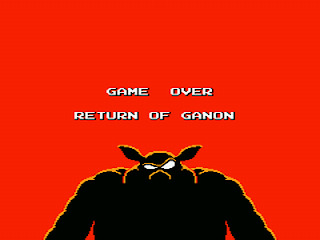
My Other Gaming Flashbacks Dreamcast 20th Anniversary GameBoy 30th Anniversary Genesis 30th Anniversary PSone 25th Anniversary PSP 15th Anniversary and Neo-Geo 30th Anniversary Saturn and Virtual Boy 25th Anniversaries TurboGrafX-16 30th Anniversary and 32-X 25th Anniversary
youtube
You have not lived the late 80s/early 90s NES fervor without watching a whole episode of Video Power. I present this episode above for your consumption!

Wait a Second, Did I Forget Some Games? Bonus Overtime!!!! I know, I know…I have rambled on forever so that is why I officially concluded this flashback just above. However, if you are somehow, someway still scrolling down and find yourself here I have a few more NES favorites and memories I would love to share so they do not remain on the cutting room floor. First off, the Teenage Mutant Ninja Turtles trilogy on the NES I have to get some reflections on! That first game….what a mess of a platformer it turned out to be. I did love its theme music though! TMNT fever was ubiquitous during the NES generation and I was an ardent fan of the shelled heroes like almost all kids my age so I forced myself to put way too much time into it than I should have. Several years ago I revisited it and finally finished it, well after the help of Game Genie cheat codes that is. Even with the cheats that swimming level remains a tumultuous effort to persevere through.

TMNT II: The Arcade Game is exponentially better and is a pretty decent port of the first arcade game. While the graphics are dialed back significantly to run on the NES, that did not stop my friend Matt and I revisiting and romping through this and its sequel several times over the years. TMNT III: The Manhatten Project is a NES exclusive, and featured the same arcade brawling engine as its predecessor, but this one has colorful beach levels with foot soldiers that toss sand at the turtles!! Yes, I have played the NES version of TMNT Tournament Figheters and I will give props to Konami for mustering everything they could out of the NES graphically by late 1993 and making it the only proper 2D fighter on the NES, but it simply does not measure up to its vastly superior SNES counterpart. There are some first party Nintendo games I held off from touching on in the main feature because I have had only minimal experience with them. It is totally on me! There was one more renting memory I refrained from above, and that is dealing with Metroid. Bottom line, it spooked me too much around age six or seven to progress far into it and I remember being irate at going back a screen to see enemies I eliminated moments earlier had respawned again. I need to correct this and revisit it someday. Kirby’s Adventure I briefly played on the NES Classic to briefly try it out before moving on to different games and I never got around getting back to it. That is another NES regret I must rectify as I have played through and enjoyed past Kirby games before! Nintendo’s official licensed version of Tetris is a good playing and looking version of the classic puzzler, but it lacked one key thing the Tengen version had and that is multiplayer! My dad and I played a ton of competitive and co-op multiplayer of Tengen’s Tetris. The Tengen version also had the more Russian-flavored art style that made the visuals pop more. The co-op mode was surprisingly addictive teaming up with my dad to clear a wider, single drop box. I was surprised no other Tetris revisited this idea until it was announced days ago for the upcoming deluxe version of Tetris Effect on Xbox Series X.
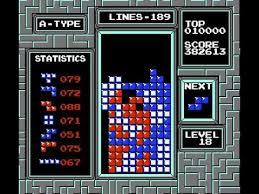

Nintendo's Tetris is on the left, Tengen's Tetris is on the right. I love the unique aesthetics and music in both of them, but Tengen's version had an excellent 2-player VS. and co-op modes that made it highly sought after, especially after Nintendo got it banned from stores! The only traditional RPG I put a lot of time into on the NES was the first Dragon Warrior. I rented it, and borrowed it another time from a friend later on and enjoyed the early parts of the game before I ventured out under-leveled and was too young to grasp the concept of grinding to level up in order to properly square off against the tougher foes. I eventually got much farther into it when it was re-released on GameBoy Color. Wait a second, does Zelda II: The Adventure of Link count as an RPG? I have heard for years people argue whether the Zelda series is considered a true RPG and I have always been on the side of classifying them in the action-adventure genre, but Zelda II is incredibly different from all other entries in the series and has leveling up and experience points involved so I would make an exception that Zelda II be considered an RPG. Unfortunately, it was another one that was too brutal for me in my childhood and I never got that far in it. I want to finally wrap this beast up by applauding the preservation market for unearthing several prototypes and lost games that were finished, but never released. Some of the more famous examples of this are Capcom’s California Raisins, a NES version of SimCity and last year the UWC Wrestling title that was canned at the final minute before resurfacing with noticeable roster and gameplay changes as WCW Wrestling. I also want to commend the smaller publisher and indie game scene for finding the resources to release new games on actual physical NES cartridges. They may be unlicensed, but it nevertheless puts a smile on my face to see new NES games being released today! Okay, with that I am finished for real this time! Many thanks again for spending an afternoon powering through this!
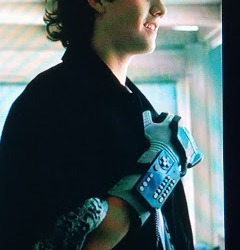
youtube
You heard my favorite NES background music earlier with the Duck Tales' 'Moon Theme.' Now behold the worst NES music...no 1942 does not qualify. I am talking about this grinding, ear screeching exuse for music that is the general background stage music for Back to the Future. You are Still Here!? Even after all these videos and links and over 6000 words of my babbling of NES nostalgia? I guess then I have one more story to share since you made it this far. This one is not a moment I am proud of. Sometimes being a NES kid brings out a…..darkness among rival NES kids. I was spending an afternoon at a cousins playing NES games all day. The same one who showed me the Super Mario Bros. 2 ending. The same one who we decided to put on hockey gloves to mimic the fights in Blades of Steel, though thinking back in hindsight I think we got our mimicking of the hockey fight in reverse and we should have had gloves off.
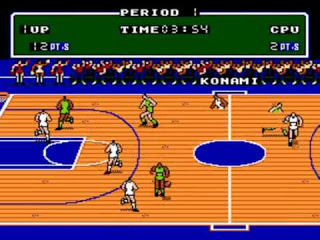

My cousing introduced me to some of my favorite NES sports games like Double Dribble and Blades of Steel. And as you are about to see, it brought out the worst in us! Anyways, this day he was showing me Double Dribble and we played it all afternoon. It impressed the hell out of me by having the national anthem opening and its cinematic dunks! Towards the end of the day we were playing other games when my mom arrived to pick me up. As I was getting ready to leave and my cousin was distracted playing a different game my NES-darkness overtook me and I thought I could ‘borrow’ my cousin’s copy of Double Dribble without asking him. I think I slid another game in Double Dribble’s place where it was on the carpet and I was super slick by flipping it upside down so he would not see the label. Yeah, I only made it out about halfway to my mom’s car outside when he came barreling out and we play-wrestled on the ground for a brief moment until I forked over that copy of Double Dribble. I must have been around eight or nine at the time and one dumb kid to try and pull that off……I should have went for his copy of Super Mario Bros. 2 instead! I am kidding of course, kids do not be like dumb NES-kid Dale and mess with your friend’s games! Extremely not cool, hugging out with a heartfelt apology, now that is cool, no wait, it is emphatically…..Totally Rad!
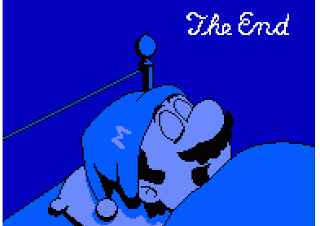
#videogames#nes#nintendo#mario#zelda#ikari warriors#wall street kid#play action football#power pad#captain n the game master#zapper#nintendo power#video power#nick arcade#mega man
0 notes
Text
Music and Cross Art Discipline in Games: Bridging the Gap
Video games take a lot of different artistic disciplines and make something cohesive. That might have been the most redundant statement I’ve ever said... In video games, you have developers, writers, artists, composers, sound designers, modelers, marketers and oh so many people who add artistic direction to the vision. Many times, these disciplines come together to create something amazing, but so many times does it feel that music is just added on top. I believe that the music of a game should encompass all that a game is, and that the game should also encompass all that the music is. The same could be said about the art and music, or art and game, or story and music, or any combination of disciplines! The game wouldn’t exist without the art, so likewise should the game not exist without music or purposeful lack of music.
Now I just sound pretentious….
Artistic disciplines have been combined for millennia, most notably through dance, drama, and music, but now have expanded to encompass all art forms within the last couple centuries. However, video games are an extremely new medium in the annuals of time. So often do you play a game that has good music, but has music that simply exists. While this music may be great, all too often does it fall back in our mind as we dismiss the soundtrack. But what about the great soundtracks? Why do we remember soundtracks that are deemed incredible? I’m of the belief that we remember these because they present music as being equal to everything else in the game. It’s almost like the music is so present that it’s fighting the art, sound, story and the game itself, while also working together with them to make a better product.
So how do we achieve these seemingly effortless mergers of the arts like you see in Super Mario Galaxy, Nier Automata and Persona 5? There’s many ways to do this, but I think most people’s gut response would be through trial and error. Don’t get me wrong, trial and error are part of it. But I think there’s something more. Something less obvious. You can understand art without actually understanding it. In cases like this, if we look on the surface we’re already dooming ourselves to the same monotony that so many other games fall into musically. I think the answer lies in understanding each other.
As composers, we have an idea of where we want music to fall in the spectrum of a project, but developers also have an idea about this. We need to understand the visions of developers, and where our music falls in a creation mindset within the world we’re creating. However, this is pretty obvious. We’re hired to help bring a vision to life. The key to a breakthrough is that developers also need to understand the vision of the composer. Composers have an idea of how a game is going to sound, and there needs to be a supportive back and forth between dev and composer, between dev and artist, and even between composer and artist. Everyone needs to have the same vision.
There’s an incredible GDC talk from Mick Gordon, the composer of the 2016 reboot of Doom that describes this relationship much better than I ever could.

To summarize it briefly, Gordon was presented with a very clear, but impossible vision. The vision was so clear that he realized he needed to approach the entire project from a different angle. When he originally thought he found the answer, he was told that his unique idea wasn’t good enough, but that he was on the right track and to keep trying. This instantly validated the work, the person, and the vision while also allowing the developers to say that this wasn’t what they had in mind. He went back to the drawing board and found the answer to the “Doom Instrument” that is heavily featured in the game. In turn, the sound team said they didn’t want guitars in the soundtrack. Slowly Gordon began to implement guitars into the soundtrack, telling them, “Guys this is Doom. You need guitars.” He also had a vision of what the soundtrack needed to sound like. This is a perfect example of composer, developer, and the sound team working together to create something that was truly fitting. The soundtrack to Doom 2016 was one of the most appropriate soundtracks in recent memory, and it wasn’t only because it was metal as fuck. The different teams worked together, and continuously verified each other work. To make a cohesive game across the arts, taking the time to understand each other’s vision is absolutely imperative.
The visual arts tend to not struggle as much in communicating. Don’t get me wrong, it still happens all the time. But if you think about the amount of times an average person looks at something critically versus listens to something critically you’ll notice there’s a huge difference in frequency. If developers don’t like a model or a piece of art, they’re going to easily be able to say “Hey, I wasn’t really thinking that for the claw. I was thinking more of a tiger claw instead of a bear.” As humans, we pass visual criticism all the time, doing so somewhat accurately, even without a direct understanding of visual art. That’s because it’s normal to us. For music and sound though, not everyone is equipped with this skill set. Most people have preferences on music, and can tell if they like or don’t like a piece. But if a developer doesn’t like a track we write, it’s all too common to hear back “I don’t like this, I don’t know what it is, but something needs to change.” And as musicians we’re sitting here and are asking ourselves “Oh god. What did we do wrong? Was the melody bad? Maybe the harmony was repetitive? No that can’t be it, the harmony was pretty varied. Maybe the mix was unbalanced? Did they not like the use of trombone over a more traditional string melody?” And we have no idea what to fix or how to make our client happy. Often when I reply back to responses like this, I’m greeted with something like “I don’t really know how to describe it. It was a little low.”
“What was a little low? Was the bass too soft? Should the melody be higher? Do I need to put it in a higher key?” Our thoughts race again, until we ask:
“What do you mean by ‘a little low’?”
“I don’t know, you’re the composer.”
This is so counterproductive.
When talking with developers, I find it very beneficial to set up some key terms about music that make communication much more effective. These can vary from vocabulary terms, musical ideas, instruments, genres, or literally anything about music. I’ll generally try to establish different key terms depending on the project, because each one is different.
The situation presented above might have been prevented if we took the time to talk with the developers to find a mutual understanding about music. If we had done this, the first time they might have been able to say “Hey, I thought that the lowest bass instrument was pitched too low. Could you maybe bring that up a bit?” This is much easier for us as musicians to understand. By this we instantly know that that our lowest instrument was too low in pitch, and that we might need to bring it up an octave. Obviously, this still isn’t too specific for composers, but we now know what the problem is, and we can devise a plan to fix it.
And granted, sometimes I don’t have to do this! One thing I really liked, was about a month ago someone I’m working with told me “I’d really like it if we could begin to implement some leitmotif ideas into this track.”
Bam. That’s a winner right there.
But just imagine what would have happened if the developer didn’t know how to articulate this. I don’t want to think about it…
And this same kind of tactic can be employed with all types of disciplines within the game industry. The music should compliment all other forms of art in a game. When possible, I like to run the music by everyone in the team to get their opinions. There’s going to be one person who has the final say, but if everyone is aware of what you’re doing, I think it’s beneficial for the entire team.
I try to start writing music only after I see visual art for what it is I’m writing for, and a plot summary for the game or scene. I can’t do this at all times, but I feel that my music is much more appropriate when I’m able to do that. In turn, my music then can influence the art and gameplay.
Granted this is just what I prefer to do, everyone has a different process.
So. Takeaways
For Developers
· Communicate your vision with everyone on the team
· Listen to everyone else’s take on the vision, but remember in the end it’s your project
· Validate the work of not only composers, but every creative discipline
· Provide pointed and directed feedback
· If you don’t understand how to articulate something, ask your creatives for advice
For Composers
· Writing truly fitting music comes from sharing the same vision as the entire team
· Take the time to understand the vision of everyone, and also make your interpretation known
· Educate those who aren’t able to provide detailed feedback on music or sound
· Be flexible on the needs and wants of the team
What it all boils down to is understanding the vision of the team. Everyone will have opinions on what the project should look like, but to create truly immersive experiences that I would call complete packages, everyone needs to have the same or a similar vision. Communication and education is key for creating industry defining games.
Games are shared knowledge, and shared dreams. Make them that way.
We’re creators, let’s create something great.
#Video Games#Video Game Developer#Video Game Development#Video Game Music#Music#Art#teamwork#indie dev#indie music#indie game#ost#soundtrack#arts#Kylydian
1 note
·
View note
Text
Good Stuff - THE TROOF ABOUT STEVEN UNIVERSE - Part 3
WARNING: I have a part 2 and a part 2 1/2 and I’m not afraid to use them, goshdarnit. Thank you, take care out there, and enjoy.
Steven Universe is a charming, popular show with a quad-polar fandom, and I’m only here to point out what I say is legitimately wrong with this cartoon. Simple enough? Fair enough. Previously, I talked about how their handling of villains has disrupted their focal story. And now, point number 3:
BEACH CITY:
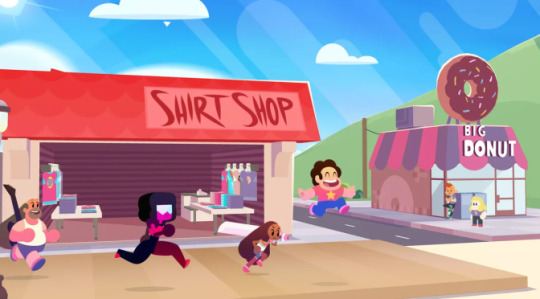
Okay, before I provide attention to our main gem heroes, I thought I’d give their home of Beach City a vocal point to express the diversity they offer and what makes them an essential drive for Steven and the Crystal Gems to protect the Earth by any means. I mean, they offer such valid representation for the show’s world building and can offer plenty of stories to tell to give us that slice of life vibe the show really needed. But I believe, after seeing Beach City time and time again over the course of 4 years, that I can summate its presence in the show with a single- Nay. With two simple yet comprehensible words.
Who cares?
Whooo CARES?
youtube
Thank you, respectable actor Elaine Stritch. Rest in Peace
To continue, don’t get me wrong. Worldbuilding is more than essential for a story like Steven Universe, Berserk, Friendship is Magic, Legend of Zelda, and so on. Whether big or small, expanding a setting is important to giving characters a versatile way to look at their world in a differing light than before. But suffice to say, what world has Steven Universe built for itself?
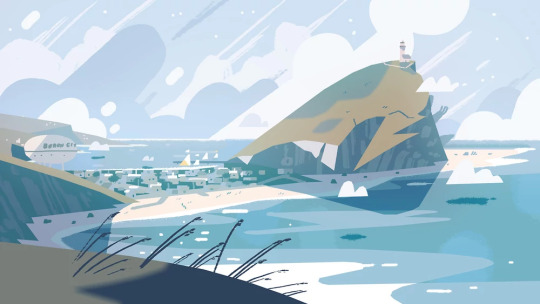
*A populated province in the East Coast?
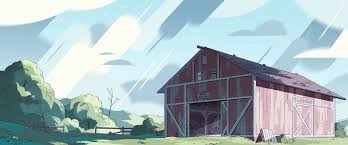
*A barn?
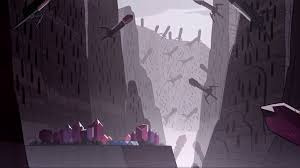
*Ancient ruins?
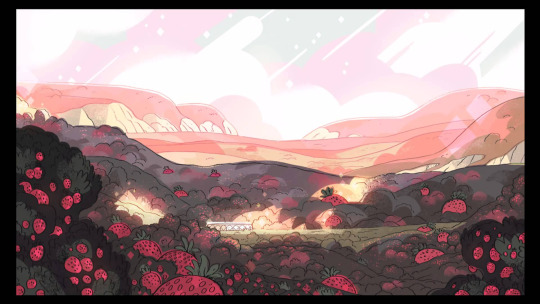
*Distant Gem Territory?
Aye, this troof is gonna be hard to explain. We just have locations, people. That’s it. They’re no special than the mini Galaxies from Super Mario Galaxy 2, only on Wii, Rated E for Everyone. A place can look cool and a population there can bring life to it, but they should have something for the characters to interact with and visibly wonder about what they might get into as they adapt and progress in some way. And by some way, I don’t mean insert plot devices that help make the characters do significant looking things, and I’ll get to that a bit later. But to sum it up, Steven Universe present locations, but those locations lack identity and coordination.
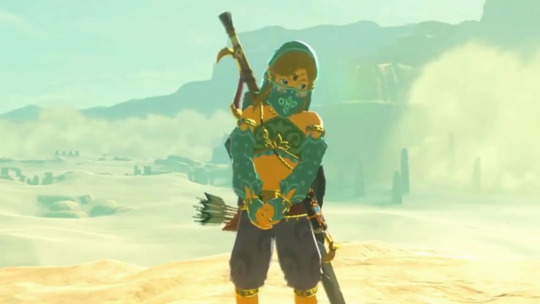
Stick around, Link, I might need your example
I got a short story to tell. True story. And this story provides my reason, above all else, for why Beach City doesn’t hold much water anymore when talking about world building, specifically after the show’s first season (or Full Disclosure).
There’s a comic book TV show called Preacher, premieres Mondays @ 9, only on AMC. Essentially it’s about a criminal turned Priest, possessed with a supernatural power, going on a cross country road trip to find the physical form of God with his his mate who’s also a vampire and his ex-girlfriend. Pretty vivid premise, but see for yourself. The first season however sets up the road trip where the priest, his ex, and vampire friend stay in a small town in Texas to not only introduce them, the power that the priest gets, and the type of humor throughout, but flesh out a few citizens they encounter pretty well in a thematically connected turnabout for ten episodes straight. All seems good.
Up until the entire town loses their minds, after losing all faith in belief, which eventually leads to a methane nuclear sized explosion that wipes out everybody except the three main characters who exited a few scenes before.
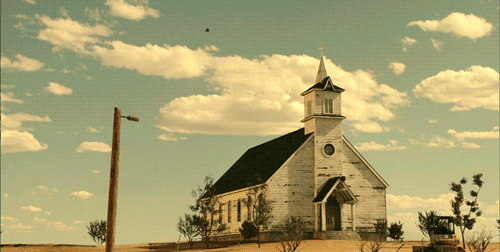
The End.
Now, let’s talk relevance. If I ran Steven Universe, and I don’t think I can, and I pulled 👆👆 that on Beach City at season 1′s end. Erase everything you’ve seen, every citizen will be forced to disappear except the major plot oriented characters, basically resetting the structure. If I did that, how much would it change? What would we really lose? The diverse Beach citizens that don’t and can’t do shit against the enemies we’ve see unless they’re forced to get involved in some way which rarely happens?
You can put as many people of color and as many personalities in your world all you want, but effort should also be put into not just making them NPC levels of value to the point where a reset button wouldn’t put much a dent to the “world building”. The worst part is that it’s not like Batman’s Gotham City or Spider-Man’s New York; places where the villains are plotting while they’re within city walls. Steven Universe’s enemies have to either be brought out somewhere (gem monsters, Lapis) or brought to (Jasper, that red Eye, Aqua and Topaz) Beach City for the place to provide any significant or value. So...
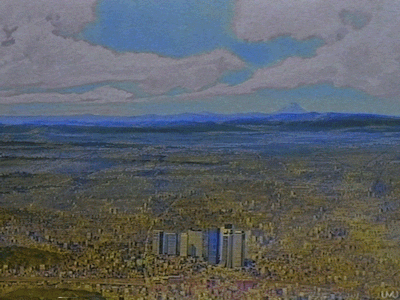
Just saying.
Now if the whole series was like season one with the non “To Be Continued” slice of life episodes, then it would’ve work. Phineas and Ferb, Foster’s Home, and Friendship is Magic has done this well with keeping their main location (The Foster House, Danville, Ponyville, etc.) as their central hubworld for casual stories with a venture outside of them from time to time. I would’ve been okay with Beach City being the spot for Steven and his limitless squad to grow together like Rebecca intended at first. Then I’m reminded that there’s an world expanding story in this, with bigger consequences and threaded arcs, and I’m stuck between investing in the many things they give me, complaining towards full episodes that add up to nothing and went nowhere special, and whining about the lack of reruns it gets on TV compared to Teen Titans GO.
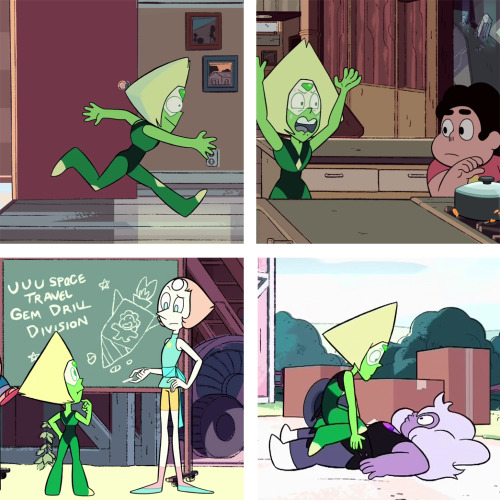
Bottom line, you had/have your comic series to commit to your slice of life genre instead of trying to keep it in the show.
Now, I’m at a disadvantage here. If I want to talk about the actual “SCIENCE FANTASY WORLD BUILDING”, then I’ll have to talk about the Crystal Gems’ involvement in them and I wanted to save that for another day. Luckily, I don’t have to, for SU has unintentionally played itself: when it comes to the Gem oriented locations outside Beach City, they tell but never really show. And turns out I don’t need Link’s example, but Samus Aran’s. Namely, her universe in the Metroid Prime series.
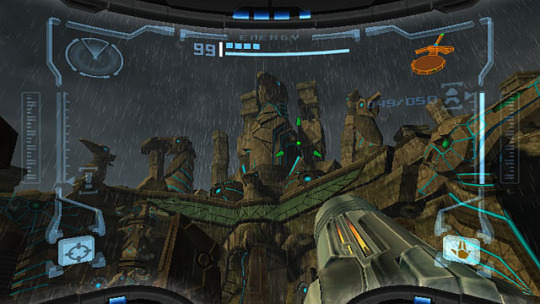
A key element to world building is the control and fun in exploration where you find and somewhat interact with aspects of an environment’s purpose and history while you’re on the go, giving the place more of an identity. Metroid Prime does this well where you journey through different parts of the Galaxy and with your scan visor, you can catalog and figure out the intricacies of the settings, the enemies within them, and info that seem trivial at first, but can offer much in progressing ahead in the game. Note the example before you...
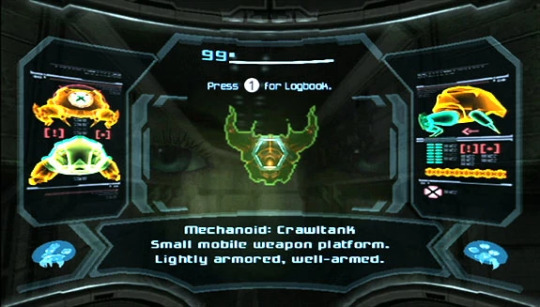
And don’t stare deep into Samus’s blue eyes
Sure it’s an optional part of the game, and you can still trek on with or without having to continuously research the world’s lore, but it offers that versatility where you’re well in control in how to experience the game. Then again, this is a video game, where your skill in figuring things out is the only way to progress anything. What cartoon has this similar level of versatility? I mean, what else?
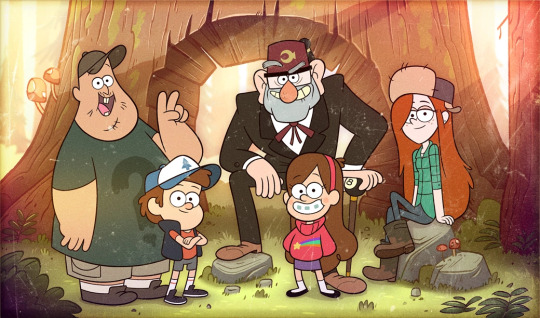
What else?
Gravity Falls may have stayed in one place, but it gives the characters and audience so much to explore and theorize on. They don’t tackle “everything” the world might have offered (bigfoot), but still give you so much to look out for without ever holding your hand or giving a cliffnotes version on a mystery of theirs. Hell, the fandom was hollering on Tumblr over predicting one of the show’s biggest mysteries being confirmed long before it aired. Hirsh didn’t just give those theory nuts what they wanted, his crew eased us in on how the narrative is taking a turn to someplace different and new without really forcing it on everybody. There was still that enjoyable sense of control that resonated in both the show’s direction and the audience’s experience.
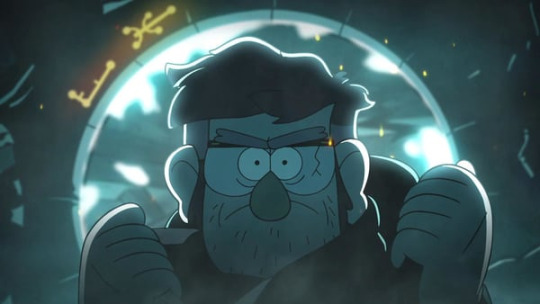
I mean come on, this just oozes the moment of truth
Don’t get me wrong. The crewniverse offer very interesting locations and things that resonate with Gem stuff. My final problem with this is that when I think they might utilize these different places and things, they hold back to sharing but a glimpse of anything the show has plenty of utilizing potential for. Like...
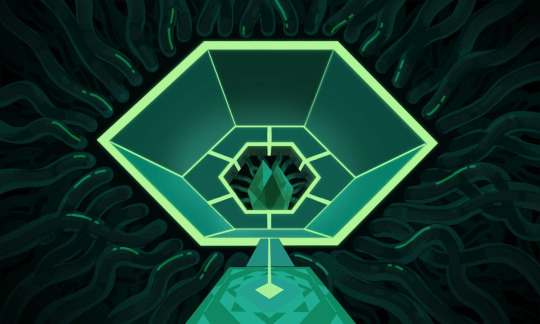
Could this control room present more information about Homeworld’s plans for the gems than just the Cluster? “Probably not, it fulfilled its purpose. Let’s move on.”
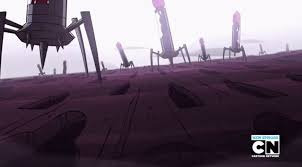
What about these drills? Could we personally see how one works, like accidentally reactivate it to see how it functions? “Nah, they’re all dead. Let’s move on.”
Or what about the holes? Could we have some kind of flashback depicting how a gem leaps out the ground? “Nope.” Not even the off col- “NOPE.”

What’s that supposed to be? Is it something important to Homeworld? “We’ll get to that later. Let’s move on.”
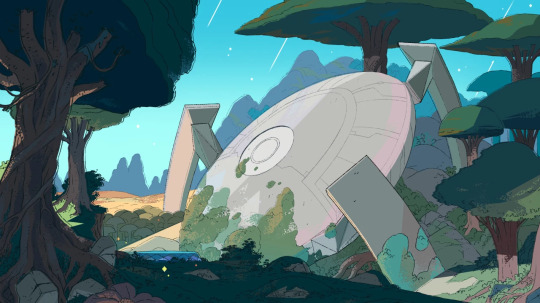
Ooh, are there more ships like this the CGs could use for space travel? Maybe spruce ‘em up with Pearl and Peridot’s technical abilities? “Nah, this is all we got and Centipeedle lives there now so... Sorry.”

Man, this place looks cool. Connie might consider this since she handles weapons and might want something new, like armor or throwing weapons. “Look man, this tour is scheduled. You’ve seen it, we’ll get back to it later. Moving right along.” This tour sucks. “You paid for it, my friend.”
Egoraptor said it best: I’m not witnessing an adventure, I’m a guest at their theme park. This is Kingdom Hearts levels of dragging it along, and I know... “But Monkey Network, they might come back to all that stuff soon. It’s called foreshadowing, you whiner.” To that, I say HA! There’s a huge difference between foreshadowing and giving us cameos. And that is in...
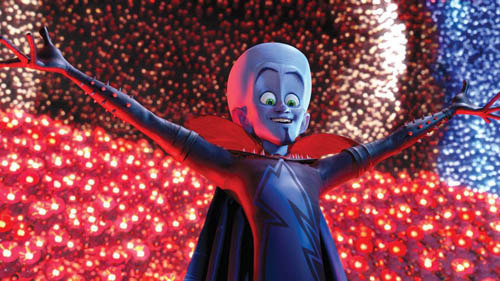
PRESENTATION!!!
Long story short, if it’s subtle and holds a threatening or vague presence, THAT’s foreshadowing. If it’s already out in the open and is not given a lot of screentime or detail, that’s cameo-ing and waiting for more. The last thing a show should do is hold back and have its audience wait like shoving a secret box in our face, and that’s all Steven Universe has been doing. That’s why so many rant about what’s filler or not. That’s why so many theorize on the most reaching of details. That’s why people proudly growl at what could be the crew’s simple decisions. Because when everything must come back to Beach City, post “Full Disclosure”, exploration can be limited, detail can be limited, and it’ll be up to the audience to speculate/construct the world-building for themselves, making the control and experience for the show feel one sided, therefore UNFAIR. To summarize, I can present the fandom’s frustration...through song.
youtube
Like I said, the things I’ve seen offer so much to think about, but Rebecca Sugar sack could’ve done better with presenting them in a better light than a dim mode. The fate of Steven Universe’s future is a mystery to me, and I don’t know what they’re gonna cram in season 5 this fall. All I know is MJ (or Mystery Girl) is fine as fuck and we’re all gonna get something good eventually. My man Ian Jones-Quartey said good world building takes time, and they sure are taking their time.
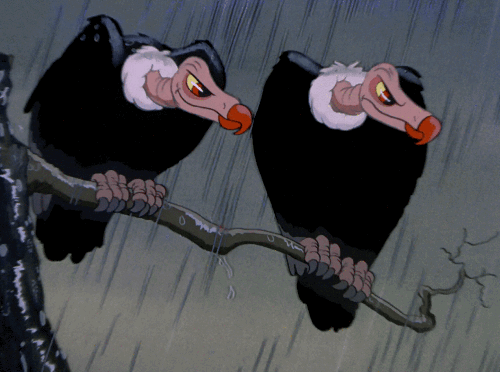
And we will be waiting, that’s for sure
#steven universe#su#su critical#su criticism#su critique#world building#cartoons#reviews#analysis#long post#Good Stuff#Roy Macintosh#ye#awesome#Metroid prime#Gravity falls
143 notes
·
View notes
Text
also I beat Mario Odyssey this morning and by beat I mean the final boss
spoilers under cut of opinions of stuff
so yeah ended up enjoying it more than when I first did once I shook the Hat in Time mechanics from my muscle memory (A Hat in Time is still a game I enjoyed better but this game definitely itches my love of collectathon games)
At just over 600 Moons (which I still call stars), got every star possible before the final boss I believe, then yeah. About 9400 coins by the end, all of which I spent on clothing (I have them all unlocked as well as the Dark and Darker Sides of the Moon, but haven’t been to them yet)
Some worlds were ehh, some were nice, most Moons/Coins I managed to find by myself, but after a point when I only had like a small handful left I’d always look at a guide for the general location (I refused to spend money on Toad for some reason and didn’t realize Amiibo would also do that), a lot of times I was always missing some obvious set of three purple coins somewhere near the beginning/end. Some were obvious, some were downright dirty.
So yeah, bosses were pretty easy (though I did die a bunch due to dumb stuff but yeah, patterns were easy). Was disappointed in the Final Bowser fight being the exact same as the Cloud fight, which was only hard until I realized the timing of the hit-block-dodge-attack thing in the third phase, and going into the final fight with that knowledge made it a joke. For some reason, I did not expect to Capture Bowser (to be fair it was pretty obvious I just don’t think ahead in these kinds of games), that was fun and the music was nice.
The ending was amusing, Mario about to kiss Peach, Bowser gets up and punches him in the face, then they fight on the moon for her affection with flowers, and she just steals Mario’s ship and leaves them both behind (Mario gets on of course but poor Bowser you gotta like Bowser)
Spent all morning just enjoying the Mushroom Kingdom (ALSO SO HAPPY THE SHOP HAD A WALUIGI COSTUME, “It’s barely used!” was a great description, I’m full on Waluigi from now on except for the Moons that require outfits, before that I was Painter’s Hat+Resort outfit)
also I should go back and finish Mario 64 someday, it’s that game I only played at neighbor’s house because no nintendo consoles until GameCube.
things I didn’t like was a lot of the instant death stuff (which mostly is just me needing to get good but still), the minigame second moons (mostly just painful slog but I guess reasonable), and the awkwardness of the controls. I still don’t know how to move around properly without pressing the wrong button (aka usually ground pounding instead of diving/long jumping), and yeah AHiT has got the whole complicated jumps programmed into me so I keep trying to backflip-throw cap-dive onto it kind of combos and they usually end up being button mashing that almost works but I lose control and they fail (notably my original solution to getting a Moon in Luncheon, where I put two Goombas together, got a Hammer Bro, jumped on the Goombas, jumped out of the Hammer Bro, threw my cap at the wall, jumped on it, and tried reaching the platform above). I almost had it my first try but I jumped the wrong direction and missed the platform, and every future attempt failed (then I realized cannons unlocked and you just shoot yourself over it and land on it)
But yeah, overalll...
Cap Kingdom- Small, but best aesthetic and music, favorite world I think, just wish it had more to it.
Cascade Kingdom- Okay/10. Basic green starting world, not much to say, not a fan of jungle/dinosaur aesthetics personally
Sand Kingdom- Kingdom that got me feeling the game, spent a looot of time exploring it, even though it was just a desert. It had sheep and that was nice, one of the better worlds for sure.
Lake Kingdom- Worst Kingdom in the game, so disappointing after Sand Kingdom. I figured it’d be a half world because of the split path thing, but then Wooded absolutely blew it out of the water (no pun intended), but yeah, tiny, mostly just swimming a small area, and could’ve easily been combined with the other water world.
Wooded Kingdom- One of the better worlds, also had the best music as well in certain sections (not as enjoyable as Cap but still great). Main complaint is that bottom layer of the woods, though I might’ve missed a beat of dialogue that explained it, since I had no idea it was there without a guide (especially since I’ve died several times falling off the side trying to do certain platforming on spinning wheels near the secret garden). I liked the extendo guys though.
Cloud Kingdom- Just a boss world from what I saw.
Lost Kingdom- Hooo boy, this is when it started to get a little frustrating, but not too bad. Caterpillars were fun, probably best capture thing. Too much poison/10, poison is awful and instant death.
Metro Kingdom- Mannn that Sim language. Was enjoyable, definitely a weird aesthetic clash (which is intentionally most of the game but still), and also Mario in a tank in a stormy city under siege is something I never expected from a Mario game. Though it also had my least favorite minigame so far... jump rope. By some miracle I got to 103 and never again.
Snow Kingdom- Small, basic, overworld was nice but average. The racing second round was hell.
Seaside Kingdom- Up there, definitely much better than Lake Kingdom and should’ve been combined with it, but mannn it is just hard to explore all that water and probably the one I used a guide the most with because of how many small missable things I missed (though only three coins, right in the sea in a depression near the volley ball court). Also, volley ball was hell as well, just not as hell as jump rope.
Luncheon Kingdom- this was a painful kingdom. A lot of this was just me “okay I’m done get me out of this pink lava hell hole”, at first it was okay to explore but after the midboss it was ehhh. Also too bright and shiny.
Ruined Kingdom- unexpected/10. Just another boss world, but mann seeing a Skyrim-esque dragon in a Mario game attacking you like the FFIX scene with Kuja against Brahne was definitely a thing. The boss refight just adding ice physics and different shaped lightning that’s hard to avoid on ice was very blehh.
Bowser’s Kingdom- ... completely unexpected/10. Did not expect a Japanese castle setting, but I enjoyed the change of pace and loved how it was still treated as a travel destination in game. Birds were fun but very painful on certain segments with metal bouncing you backwards. Felt like more of a classic 3D Mario world too (or Galaxy/3D World anyway), with the separated platforms and linearity and stuff.
Moon Kingdom- It’s the moon. Pretty bland with empty space jumping, no idea how much I missed on here but I got every Moon on the list up to like, the one on the support beams in the chapel, so yeah. Also the one moon on the cannon is like the one moon I felt was super unfair to find but oh welll, thank you guide.
Mushroom Kingdom- Great throwback level, fun little area with tons to explore, that 2D Mario section with the fading 2D segments can go to hell though- Specifically, that area with the rotating segments because using a control stick to 2D platform and having it alternate between “holding right will keep you moving clockwise” and “stick moves in the direction you’re moving, aka if you’re on the left side, you have to press Up to go right/clockwise”. I’ve died on that more than I should have and it was bluh.
in short Cap is the best and Lake is the worst
also yeah
this game has a Waluigi costume
so far I went back and got all the Moons in Cap (except the Art one) and Cascade, the races I feel are going to be a nightmare soon but yeah. Also worried about how much money grind I might have to do to get all the outfits (they all seem doable since there’s like five pieces left for me to get I think, the Gold/Metal sets and the Skeleton, but the freaking Skeleton outfit is 9999 and that’ll be the thing that kills the completionist in me)
speaking of completionist, no idea how to feel about buying moons or if there’s a limit, but there doesn’t seem to be so hm
ALSO I LOVE HOW PEACH HAS DIFFERENT OUTFITS IN HER JOURNEYS TO THE KINGDOMS, her Cap outfit was fantastic and I hope she’s still there/is able to wear it because it is a very nice outfit good job being fashionable Peach
also I have to wonder still
where is Luigi
is he on the dark(er) side(s) of the Moon
I will find out myself once I collect everything and hit up the dark side segmentss
also once I’m done with everything I’m going to get a friend to co-op with me and see how bad the co-op is because I can’t imagine how it works
1 note
·
View note
Text
The 10 Best Star Wars Video Games (Ever!!!)
The Star Wars universe has always been more than the sum of its live-action films.
Novels, comic books, toys, TV shows, and ill-fated holiday specials have all helped build out the iconic science fiction universe that George Lucas first kicked off in 1977. One would be hard-pressed to find a larger and more enduring franchise than the Lucasfilm IP (now owned by Disney), which continues to enthrall multiple generations of fans.
Aside from the mediums mentioned above, video games have also played an integral part in the world-building of the Star Wars mythos. Indeed, it could be argued that they play the most important role, as gaming allows one to take up the persona of their favorite character and choose their destiny.
In a way, you get to become the director of your very own Star Wars adventure.
The 10 Best Star Wars Video Games
With that in mind, we present the ten best Star Wars video games ever released in no specific order. The titles presented below have not all been chosen for their critical acclaim or units sold in stores. Certain fans may not universally love some. Rather, they were selected based on the following criteria:
Significance to the overall IP
Creative use of people, places, or things seen in the films
Mythos construction
Fan service
The prescience of things to come
10. Star Wars Episode I: Racer
Release date: May 18, 1999
While many Star Wars fans had problems with the first prequel film, no one could deny the thrilling nature of the sequence where young Anakin Skywalker (Jake Lloyd) wins his freedom from Watto in a pod racing tournament on Tatooine. It was a testament to just how far CGI technology had come in Hollywood, and how an intrepid filmmaker could use it to grand effect.
Moreover, the scene was a loving tribute to Lucas’s youth, a lot of which was spent drag racing in the writer/director’s hometown of Modesto, California—something Lucas also acknowledged in his second directorial feature, American Graffiti.
Hitting stands the same week Phantom Menace opened in U.S. theaters, Star Wars Episode I: Racer allowed players to live out one of the film’s most adrenaline-pumping segments. Moreover, it expanded on the central concept by offering different pod racer vehicles, as well as various tracks on eight distinct planets. While Mario Kart was already seven-years-old in ’99, this title provided a much welcome twist on the racing formula in video games.
In 2011, the Guinness Book of World Records, named Star Wars Episode I: Racer as the best-selling sci-fi racing game with 3.12 million copies sold all over the world.
9. Star Wars: Knight of the Old Republic
Release date: July 15, 2003
This is perhaps the most famous title on our list. Set four millennia before the Galactic Empire set up tyrannical shop, Knights of the Old Republic follows the ancient battle between the noble Jedi Order and the evil Sith.
With options to customize your lightsaber and character, players must visit eight planets (including familiar ones like Tatooine and Kashyyyk) to defeat Darth Malak. Thanks to fantastic gameplay and a solid plot, the role-playing game serves as an excellent prequel to the prequel film trilogy. Moreover, fans have been clamoring for a movie version of it for years.
Who knows? If The Mandalorian, Cassian Andor, and Obi-Wan series all do well on Disney+, we could get a long-awaited KOTOR adaptation.
8. Star Wars: The Force Unleashed
Release date: September 16, 2008
Like some of the comics from Marvel, The Force Unleashed intriguingly pulls back on the curtain on what Darth Vader gets up to when he’s not antagonizing the Rebel Alliance and Luke Skywalker on the big screen.
Taking place between Revenge of the Sith and A New Hope, this title follows the adventures of Vader’s “secret apprentice,” Galen Marek, who is tasked with hunting down and killing the last-remaining Jedi in the galaxy. Marek (voiced by Sam Witwer, who also played Darth Maul in Clone Wars and Rebels) is convinced that he will one day kill Emperor Palpatine and rule the galaxy by Vader’s side.
As the game’s art director, Matt Omernick, told Vanity Fair, the entire project was meant “to convince players that, ‘Oh my God, I’m actually, finally, in a Star Wars movie.’”
7. Star Wars: Battlefront
Release date: September 21, 2004
Long before controversies were surrounding pay-to-play and loot crates, the Star Wars gaming franchise was reaching new heights with the release of the first Battlefront. In a lot of ways, this game felt like a culmination of everything that had come before, opening up the universe in a way fans had never seen before.
Almost like the Super Smash Bros. of Star Wars video games, Battlefront was all about playing the greatest hits of the series. You weren’t limited to one character, droid, vehicle, planet, or battlefield. You could enjoy them all in any number of combinations, be it as a Stormtrooper or as a Droideka, in an X-wing or an AT-AT.
6. Star Wars: Battlefront II
Release date: November 1, 2005
If the first Battlefront changed the Star Wars game (pun intended), then its immediate sequel perfected it. Battlefront II didn’t need to get all fancy; it just had to give us one thing: the ability to play as a Jedi or as a Sith, hero, or villain. For the first time, you could run around a map, killing your enemies as Yoda, Darth Vader, Obi-Wan, Mace Windu, Boba Fett, Princess Leia, Han Solo, Chewbacca, Emperor Palpatine, and even Darth freakin’ Maul!
And since Revenge of the Sith had finally debuted in theaters, you could also access new planets like Utapau and Mustafar. Whether you played Battlefront II on PlayStation, Xbox, or PlayStation Portable, it was one epic gaming experience.
5. LEGO Star Wars: The Complete Saga
Release date: November 6, 2007
Kids have always been a major part of the Star Wars fandom, so what better way to introduce a younger audience to the series (which can be dark and scary at times) than with a “LEGO-ized” version of it?
Adopting a more tongue-in-cheek approach to the six-film saga contained between Phantom Menace and Return of the Jedi, LEGO Star Wars: The Complete Sage is the video game equivalent of teaching your child to ride a bike with training wheels. Once they come to love the characters and universe, they should be able to graduate to the more mature elements of the movies in what should be a seamless transition.
And that’s not to say that the LEGO games are just for kids. Indeed, they’re packed with plenty of fun visual and audio gags that help paint the franchise in fun and often hilarious new light for longtime fans of the franchise who are looking for something a little off the beaten path.
4. Star Wars: Rogue Squadron
Release date: December 7, 1998
Influenced by the Dark Horse comics of the same name, Rogue Squadron may have been a response to the release of the first (and insanely popular) Star Fox game from Nintendo the previous year.
Even if it was, the title allowed players to become ace Rebel pilots in several different ships: X-wings, Y-wings, A-wings, V-wings, and even Snowspeeders. Like Episode I: Racer, Rogue Squadron was a chance to get into the thick of the aerial dogfights the original trilogy had become known for.
The game was so popular that it spawned two sequels, Rogue Leader (2001) and Rebel Strike (2003).
3. Star Wars: Shadows of the Empire
Release date: December 3, 1996
This is a really cool entry on the list because Shadows of the Empire was a single part of a greater multimedia initiative from Lucasfilm.
Shadows of the Empire was an umbrella project that yielded a novel, comics, and toys. Unfurling between The Empire Strikes Back and Return of the Jedi, the SoTE game places you into the role of Dash Rendar, a member of the Rebel Alliance, who must protect Luke Skywalker from the deadly sights of Dark Prince Xizor, a galactic gangster looking to become Darth Vader’s second-in-command.
Similar to the events of Rogue One, this game shines an interesting light on the unsung heroes in the conflict against the Galactic Empire.
2. Star Wars: Obi-Wan
Release date: December 19, 2001
Released more than a year after Phantom Menace hit theaters, this game emphasized one of Episode I’s most beloved characters: young Obi-Wan Kenobi played by Ewan McGregor. Set before and during the events of that film, players can face off against a slew of enemies, both old and new, including an assassin droid, Tusken Raiders, and of course, Darth freakin’ Maul.
Despite mixed reviews, Star Wars: Obi-Wan was somewhat ahead of its time by acknowledging that McGregor’s character was one of the best parts of the prequels. Years later, he remains a fan favorite and is even receiving his live-action series on Disney+ that takes place between Revenge of the Sith and A New Hope.
1. Star Wars: TIE Fighter
Release date: July 1, 1994
It makes a lot of sense to consider TIE Fighter as a companion piece to Rogue Squadron. After all, both games are simply two sides of the same coin. In this case, you’re not fighting for the Rebel Alliance under Luke Skywalker, but for the Imperial Navy under his father, Darth Vader. The screeching TIE Fighters are just as iconic as the Rebel X-wings, so this title proved a real treat in allowing one to side with the bad guys for a change.
The post The 10 Best Star Wars Video Games (Ever!!!) appeared first on Your Money Geek.
from Your Money Geek https://ift.tt/30T4BbJ via IFTTT
0 notes
Text
Big secrets, bumper box-office for
LOS ANGELES (Reuters) – “Avengers: Infinity War” boasts more than 20 superheroes and expects to storm the box office, but even its A-list cast don’t know quite what to expect when the film gets its world premiere on Monday night
Cast member Benedict Cumberbatch talks with director Joe Russo as cast member Karen Gillan reacts at a fan event for Marvel Studio’s Avengers: Infinity War movie, in Singapore April 16, 2018. REUTERS/Feline Lim
Secrecy was key during filming on the Walt Disney Co. movie, which brings together almost every comic-book hero in Marvel’s cinematic universe for an all-out battle with supervillain Thanos.
Most of the actors were given scripts for only the scenes they were filming, or given complete scripts that turned out to be fake, in order to prevent spoilers – particularly which characters may get killed off – from leaking out.
The cast will not see the finished product until the world premiere in Los Angeles on Monday night.
“I kind of like that,” said Benedict Cumberbatch, who plays Dr. Strange. “I like that we’ll be sitting in our own audience … it’s just going to be a thrill to watch it for the first time. I’m genuinely really, really excited.”
Cast members Sebastian Stan (L), Winston Duke (C) and Anthony Mackie pose for a portrait while promoting the “Avengers: Infinity War” in Beverly Hills, California, U.S., April 21, 2018. Picture taken April 21, 2018. REUTERS/Mario Anzuoni
With outsize heroes, including Captain America, Spider-Man, Iron Man, Black Widow, Black Panther and the Guardians of the Galaxy, comes massive fan appeal.
Analysts say the film could come close to, or even break, the $248 million North American box-office opening set in 2015 by “Star Wars: The Force Awakens,” also from Disney.
Barton Crockett, media industry analyst at B. Riley FBR, predicted a $238 million debut for the film, which would make it the biggest opening this year.
Slideshow (3 Images)
The narrative seeds of “Infinity War” have been scattered through the Marvel cinematic universe franchise of crossover characters and plots since 2008’s “Iron-Man.”
“The theory that Marvel had when they started to make movies was that these movies would be promotional platforms for each other, stories that would continue to pull people along,” Crockett said.
“Infinity War,” directed by brothers Joe and Anthony Russo, sees despot Thanos (Josh Brolin) fight the Avengers and their allies for all six of the legendary Infinity Stones that give the user specific powers to manipulate other people, objects or forms of energy.
“Thanos is a very interesting character because his agenda is to save the universe by destroying the universe,” said Tom Holland, who plays Spider-Man. “It’s something we haven’t seen before and a lot of the movie is seen through his eyes.”
Speculation has been rife about which characters may die but the directors declined to give details.
“Avengers: Infinity War” starts its international rollout on Wednesday and arrives in U.S. movie theaters on Friday.
Additional reporting by Lisa Richwine; Editing by Cynthia Osterman
The post Big secrets, bumper box-office for appeared first on World The News.
from World The News https://ift.tt/2FaWziy via News of World
0 notes
Text
Big secrets, bumper box-office for
LOS ANGELES (Reuters) – “Avengers: Infinity War” boasts more than 20 superheroes and expects to storm the box office, but even its A-list cast don’t know quite what to expect when the film gets its world premiere on Monday night
Cast member Benedict Cumberbatch talks with director Joe Russo as cast member Karen Gillan reacts at a fan event for Marvel Studio’s Avengers: Infinity War movie, in Singapore April 16, 2018. REUTERS/Feline Lim
Secrecy was key during filming on the Walt Disney Co. movie, which brings together almost every comic-book hero in Marvel’s cinematic universe for an all-out battle with supervillain Thanos.
Most of the actors were given scripts for only the scenes they were filming, or given complete scripts that turned out to be fake, in order to prevent spoilers – particularly which characters may get killed off – from leaking out.
The cast will not see the finished product until the world premiere in Los Angeles on Monday night.
“I kind of like that,” said Benedict Cumberbatch, who plays Dr. Strange. “I like that we’ll be sitting in our own audience … it’s just going to be a thrill to watch it for the first time. I’m genuinely really, really excited.”
Cast members Sebastian Stan (L), Winston Duke (C) and Anthony Mackie pose for a portrait while promoting the “Avengers: Infinity War” in Beverly Hills, California, U.S., April 21, 2018. Picture taken April 21, 2018. REUTERS/Mario Anzuoni
With outsize heroes, including Captain America, Spider-Man, Iron Man, Black Widow, Black Panther and the Guardians of the Galaxy, comes massive fan appeal.
Analysts say the film could come close to, or even break, the $248 million North American box-office opening set in 2015 by “Star Wars: The Force Awakens,” also from Disney.
Barton Crockett, media industry analyst at B. Riley FBR, predicted a $238 million debut for the film, which would make it the biggest opening this year.
Slideshow (3 Images)
The narrative seeds of “Infinity War” have been scattered through the Marvel cinematic universe franchise of crossover characters and plots since 2008’s “Iron-Man.”
“The theory that Marvel had when they started to make movies was that these movies would be promotional platforms for each other, stories that would continue to pull people along,” Crockett said.
“Infinity War,” directed by brothers Joe and Anthony Russo, sees despot Thanos (Josh Brolin) fight the Avengers and their allies for all six of the legendary Infinity Stones that give the user specific powers to manipulate other people, objects or forms of energy.
“Thanos is a very interesting character because his agenda is to save the universe by destroying the universe,” said Tom Holland, who plays Spider-Man. “It’s something we haven’t seen before and a lot of the movie is seen through his eyes.”
Speculation has been rife about which characters may die but the directors declined to give details.
“Avengers: Infinity War” starts its international rollout on Wednesday and arrives in U.S. movie theaters on Friday.
Additional reporting by Lisa Richwine; Editing by Cynthia Osterman
The post Big secrets, bumper box-office for appeared first on World The News.
from World The News https://ift.tt/2FaWziy via Breaking News
0 notes
Text
Big secrets, bumper box-office for
LOS ANGELES (Reuters) – “Avengers: Infinity War” boasts more than 20 superheroes and expects to storm the box office, but even its A-list cast don’t know quite what to expect when the film gets its world premiere on Monday night
Cast member Benedict Cumberbatch talks with director Joe Russo as cast member Karen Gillan reacts at a fan event for Marvel Studio’s Avengers: Infinity War movie, in Singapore April 16, 2018. REUTERS/Feline Lim
Secrecy was key during filming on the Walt Disney Co. movie, which brings together almost every comic-book hero in Marvel’s cinematic universe for an all-out battle with supervillain Thanos.
Most of the actors were given scripts for only the scenes they were filming, or given complete scripts that turned out to be fake, in order to prevent spoilers – particularly which characters may get killed off – from leaking out.
The cast will not see the finished product until the world premiere in Los Angeles on Monday night.
“I kind of like that,” said Benedict Cumberbatch, who plays Dr. Strange. “I like that we’ll be sitting in our own audience … it’s just going to be a thrill to watch it for the first time. I’m genuinely really, really excited.”
Cast members Sebastian Stan (L), Winston Duke (C) and Anthony Mackie pose for a portrait while promoting the “Avengers: Infinity War” in Beverly Hills, California, U.S., April 21, 2018. Picture taken April 21, 2018. REUTERS/Mario Anzuoni
With outsize heroes, including Captain America, Spider-Man, Iron Man, Black Widow, Black Panther and the Guardians of the Galaxy, comes massive fan appeal.
Analysts say the film could come close to, or even break, the $248 million North American box-office opening set in 2015 by “Star Wars: The Force Awakens,” also from Disney.
Barton Crockett, media industry analyst at B. Riley FBR, predicted a $238 million debut for the film, which would make it the biggest opening this year.
Slideshow (3 Images)
The narrative seeds of “Infinity War” have been scattered through the Marvel cinematic universe franchise of crossover characters and plots since 2008’s “Iron-Man.”
“The theory that Marvel had when they started to make movies was that these movies would be promotional platforms for each other, stories that would continue to pull people along,” Crockett said.
“Infinity War,” directed by brothers Joe and Anthony Russo, sees despot Thanos (Josh Brolin) fight the Avengers and their allies for all six of the legendary Infinity Stones that give the user specific powers to manipulate other people, objects or forms of energy.
“Thanos is a very interesting character because his agenda is to save the universe by destroying the universe,” said Tom Holland, who plays Spider-Man. “It’s something we haven’t seen before and a lot of the movie is seen through his eyes.”
Speculation has been rife about which characters may die but the directors declined to give details.
“Avengers: Infinity War” starts its international rollout on Wednesday and arrives in U.S. movie theaters on Friday.
Additional reporting by Lisa Richwine; Editing by Cynthia Osterman
The post Big secrets, bumper box-office for appeared first on World The News.
from World The News https://ift.tt/2FaWziy via Today News
0 notes
Text
Would A Fan-Favorite Slice on From Time 5?
Notice: Actually every point after this one is riddled with Recreation of spoilers, therefore follow cautiously if you are not upto-date together with even the TV show or OR and the textbooks. The game provides you with the ability to ‘advertiseHA something each few minutes, this means it will possess a higher chance of appearing whenever a participant accesses their HQ. I would advise Not just waiting until a free publicize can be acquired (you'll be able to advertise multiple points at the same moment for quality currency but I don't believe itis worth it) but itis possibly recommended to simply provide your product in the highest price available as somebody can undoubtedly buy it possibly at that high of an amount. Google-owned Motorola's Motox is a good mobile for anyone looking without the high price label connected with higher-stop devices for a solid Android experience. It was going to be another Uncharted recreation but sexy pet was worried having a lot of activities being released therefore close together about team burnout, so it was nixed by them. We spent just like a full yr dicking about using pitch and distinct ideas next before the facility was left by me. Ultimate HA8bit' soundtrack continues to be being performed by the former musician who offers his skills for the recreation. I cannot delay to see what their following sport is, speculate if possibly the main reason we're observing numerous new persons being chosen is because they want it to be a 2016 release, perhaps it will likely be unmasked atone of the conventions after E3, like Gamescom or PSX. Fine, I'm performed Sport of Thrones.Water Garden, stupid.Gratuitous rape scene revolting and was a bumpy ride that just-ended. After viewing that movie, it produced me re-evaluate understand and my life how very stupid the sport is. It was removed by me off my Telephone. I firmly believe that mobile games isn't merely viable, nevertheless the way of the future also, although don't need to claim about any of it. Interestingly although, I discovered that loading instances regarding activities did not change considerably involving the two units, and in many games—Minecraft regarding instance—the Moto GARY really loads quicker. Of what tablets are employed regarding likewise this perception, influences how game designers approach them. Scientists are constantly inventing techniques to miniaturize phones that are mobile and strengthen microchip volume. Truthfully although, I believe that eventually, portable gaming could be a hardcore gaming software as much as folks as long as any console that is other devote the time and effort to obtain the games that are great. Nevertheless, if you are not bad at racing-games, this mill is likely to be somewhat nominal while the sport may an excellent task of fulfilling gamers who strike chart ambitions while still gaining first place. But if you're searching for diversity in your devices then you certainly should opt for applied portable in Chennai. People behave as being similar to gaming addicts with these games since empty their dollars and you wish to bring folks in and there are no door expenses at casinos. The Yahoo-backed cellular operating-system is acquiring the Smartphone industry by storm. There are certainly a lot of good games about the Mac, games which will manage properly or decently about the Mac small. It seems just like a piercing Samsung Universe Loss 2 10.1 Android product, filled with really sparkly gray plastics. Pre orders commence Friday June NINE and the gadgets are available to purchase from September 16 in more than 25 places. Is available in 32GB and iPhone 7 begins /128GB/256GB drives. One firststep will be to slash its cellular phone line up and decrease the amount of regions wherever telephones are sold by Samsung. Android appears set-to entirely master the high-growth acquiring markets and improve its marketshare nevertheless additionally,” noted Nick Spencer, mature apply director , mobile devices, in a record. SIMPLY REASON TO OWN AN ANDROID PRODUCTANDSYSTEM MAY BE THE UNOFFICIAL PS4 INTERNET BESIDES THAT ANDROID ABSORBS!! New unreleased indie activities appear on a regular basis, it requires anything truly particular to announce and get that promotion. There's a lot of cool things if you stick around in the proper spots, items which provides you with a significant leg-up on a number of the more challenging combats while in the recreation found. I'm NOT trying to mash on Oceanhorn, but that game is one of the greater activities on iOS and it's really a simple duplicate of a decade-old system sport. In Sport of Thrones, it's very hardly impossible that Westeros has an elongated or very unusual orbit. We're able to add the like, specifics and more works to improve the presentation, but then we would not have the game to perform effectively on our goal devices. Additionally, Hardware Variety OTG is supported by the Bill 3, sufficient reason for a bunch adapter you need to use some game controllers, USB keyboards and thumb drives. On dropping referrals size leans too heavily. Participants in Eve represent the largest force for making stories and shifting items onward inside the sport galaxy. Final summer Yoshida san themselves said that Square Enix was willing to work on an Xbox One model of the sport as soon as Microsoft granted cross platform gameplay, also mentioning the chance of having machines having Windows and Xbox One players only. A year ago the indie designer of the critically-acclaimed Index: The Trick of Bryce Manor, Lion Style introduced a battery of lifetime selling figures from its sport Rising Mars, showing a huge drop-off when it faded from maps and the App-Store included station. But, note that this regarding the software along with Android and the walled garden test probably wouldnever complete using Apple. The God-Sincere-Truth is that first occasion Nintendo activities are second to none - you merely can not contend with the kind of the Mario Zelda and Metroid Metroid franchises. The P-series Cybershot , Walkman and series of telephones are the offices that have delivered a great deal of money and reputation for the corporation, helping get over significant deficits and fire to become among the most risky rivals in the market telephony that is cellular. The initial Android unit was an Miracle with Android 1.5. It lacked many features in comparison with my iPod using iOS THREE. Gambling was not ages worsen on my iPod than on my Magic. If anything a number of the cellular games really are a bit less easy because of obtaining a touch display which for some is difficult to manage or use. It's worth knowing that stopping recreation and application signals cards could have zero influence on your power play games to the services or to use Fb software. fitnesswelt-de.com/ can be done using this game the place where a player may change a cards from his/her collection using another player's Industry Zone characteristic. Once the game was finished I routed it down to Oberon marketing who stated they would submit it as Horse Mayhem as there is a flick called Twenty Apes and so they did not wish any problems. Specifically on sites centered around games information such as for instance IGN or GameSpot, I would regularly see persons conversing like they'd buy a recreation or they'd wish to visit a sequel, nevertheless, you could gamble your bum these people won't buy the recreation if it actually emits and they've never performed some of the past titles before. Like in Madden, the pass string places the sport in slow mo and introduces move possibilities with color coding for how secure it is to pass to them. I take advantage of my cellphone more of the palmtop pc and the technique that is android matches us more especially when managing numerous records. I hope the this sport get yourself a complete strategy rather than just 5 planets like in to The Nexus got. For Castlevania II: the Revenge, the builders several years that are returned an afterwards with a lightweight sport worth seated alongside the home of Belmont -system games in the Castlevania sequence. For me personally gaming's ongoing future is going to be head mounted VR on portable and pc platform. GQ are making techniques toward portable publishing using their iphone applications.
0 notes
Text
How are you today? i’m pretty good. it’s been a really good day with family.
Have you ever had mono? i haven’t. i’m kind of surprised. jake’s had it before i was still going around. Do you prefer just water, or do you like to put in crystal light, ect? just water. i don’t really like the flavored stuff anymore. Were you ever addicted to Sims? not addicted. i’d play on occasion but that was it. Ever been to prom? i went to senior prom with jacob.
Are you taking a language in school? i took a semester of french and a semester of spanish in college. but i am no longer in school.
What kind if iPod do you have? i have the ipod touch, 5th generation.
Are your parents divorced? nope. high school sweethearts, been together forever. :) What’s your favorite kind of gum? depends on the day and my mood.. Are you single or taken? very much taken. i’m married to MY high school sweetheart. Do you like it that way? yeah. if i didn’t, i wouldn’t put up with everything i do. What kind of music do you like? i listen to a bunch of different stuff. lately it’s been a lot of ed sheeran and going back to country. What kind of phone do you have? galaxy s5. What cell phone provider do you have? straight talk. i like the unlimited everything for not an arm and a leg. How often do you floss? not nearly often enough after a girl at work told me about her tooth breaking from floss. Mechanical pencils or real ones? mechanical pencils. Have you been to any concerts? If so, which ones? i’ve been to quite a few at the fair. i have also been to some outside of the fair, my favorite being ed sheeran. What level do you play on Guitar Hero? i can play on normal but that’s it. What consumes most of your time besides school? i’m not in school. but wyatt basically consumes all of my time now. What store are most of your clothes from? probably walmart, to be honest. Can you drive? yes. i rarely do though. What did you want to be when you grew up? country singer. crime scene investigator. Do you go on vacation a lot? i do not. we rarely get to. Do you have braces? If not, when did you get them off? i do not, and i’ve never had them. Do you hang out with your neighbors? i do not. besides my family that live two streets away. but not my neighbors directly surrounding me.. Let alone, do you even know who your neighbors are? no. What’s your favorite season? spring through fall. i hate winter because it usually gets way too cold around here. Do you have a pool? there is one in the trailer park. Do you have your own computer? i do, thanks to my parents. What do you think of wearing sweats to school? i prefer jeans but i have wore sweats, or something similar, when i didn’t have any clean. How about dresses? i rarely wore dresses, but i don’t see an issue. Is your last name unique? not so much, no. Do you go out to eat more often, or eat dinner at home? lately, eating out. unfortunately. Have you ever heard of the band Ferris? i have not. Are you okay with when your birthday is? yeah. why should i care? How often do you get mail specifically for you from the mailman? at least monthly. Do you prefer skiing or snowboarding? i’ve never done either. i’d probably kill myself if i tried. Have you ever played Mario Kart Wii? i have not. Do you have a low self-esteem? very. Do you like to run? it not my favorite activity. Have you ever ran with scissors? i’ve walked quickly but i don’t remember ever actually running.. although i’m also not saying i’ve never done it. How’s your ability to use a hammer?
dangerous to my own hands, probably. Do you like to swim? i do but don’t get to much. If so, do you prefer swimming in the ocean, a lake, or a pool? i’ll take any of it. but i guess i prefer the lake or a pool. Speaking of oceans, have you ever been to one? yeah, i have. Where do most of your relatives live? around here. How many songs are on your iPod? probably about 1,600. Do you know anyone colorblind, or slightly colorblind? not that i can think of. Do you have more guy friends or girl friends? i’m not sure i really have any friends anymore. How big is your deck? big enough we could put some stuff on it. Do you like pink? it’s generally not my favorite. Have you ever sucked in helium? yeah. i’ve done it a lot, especially when i was growing up.
0 notes